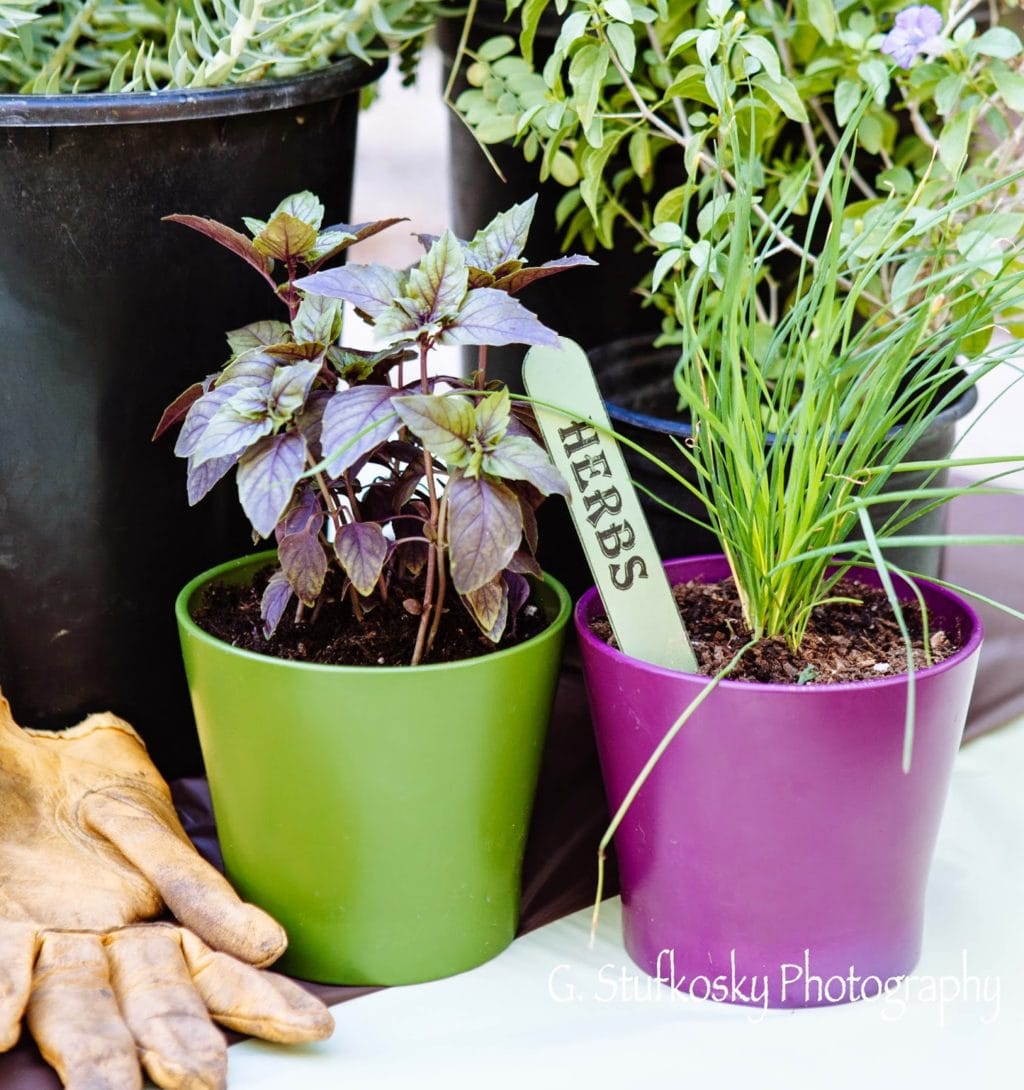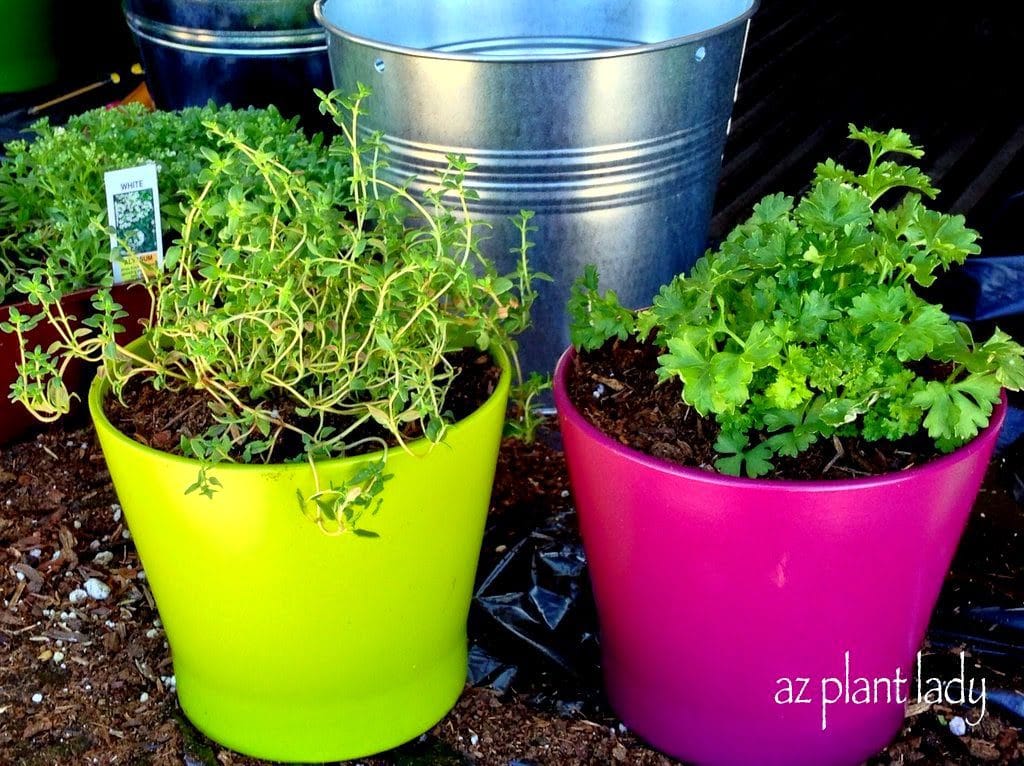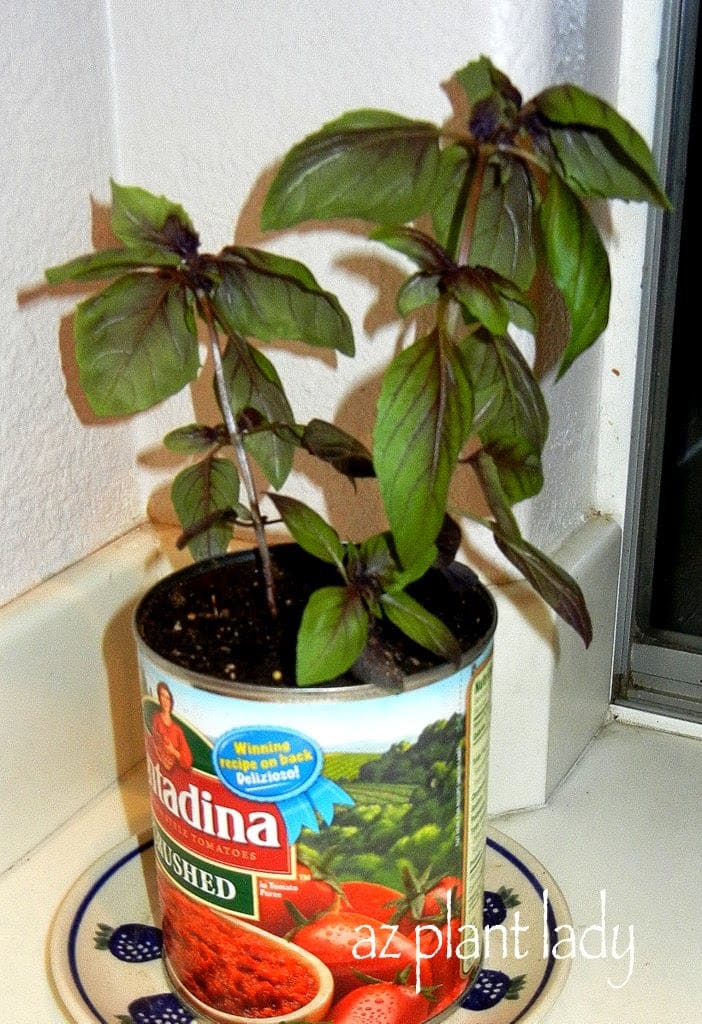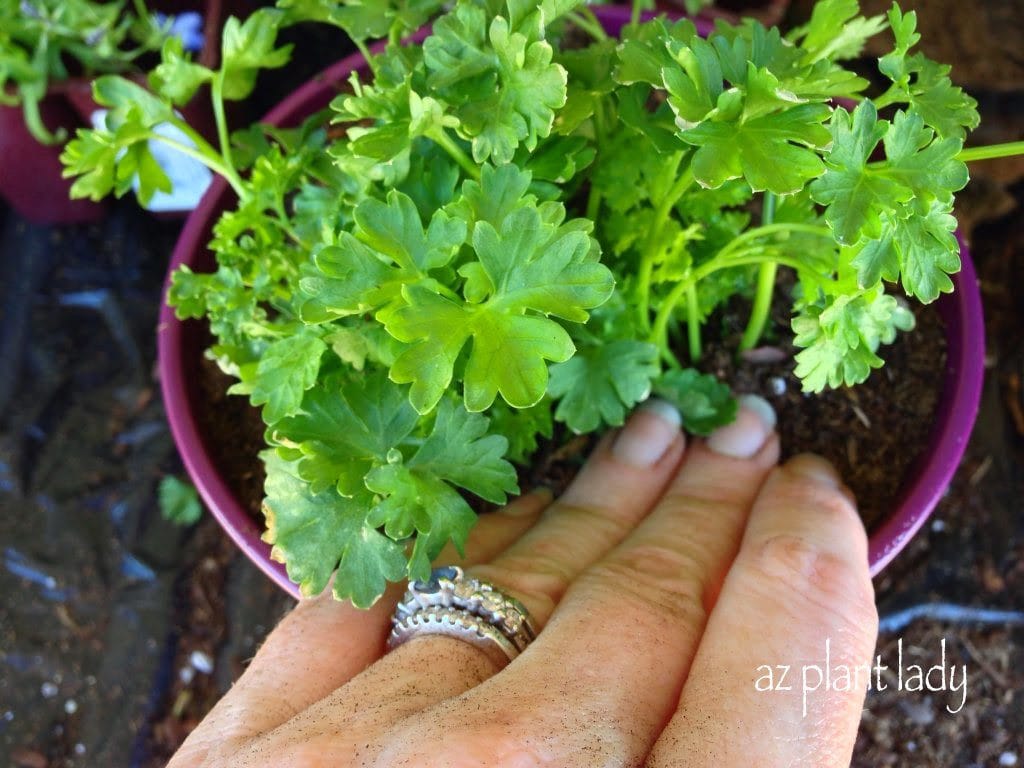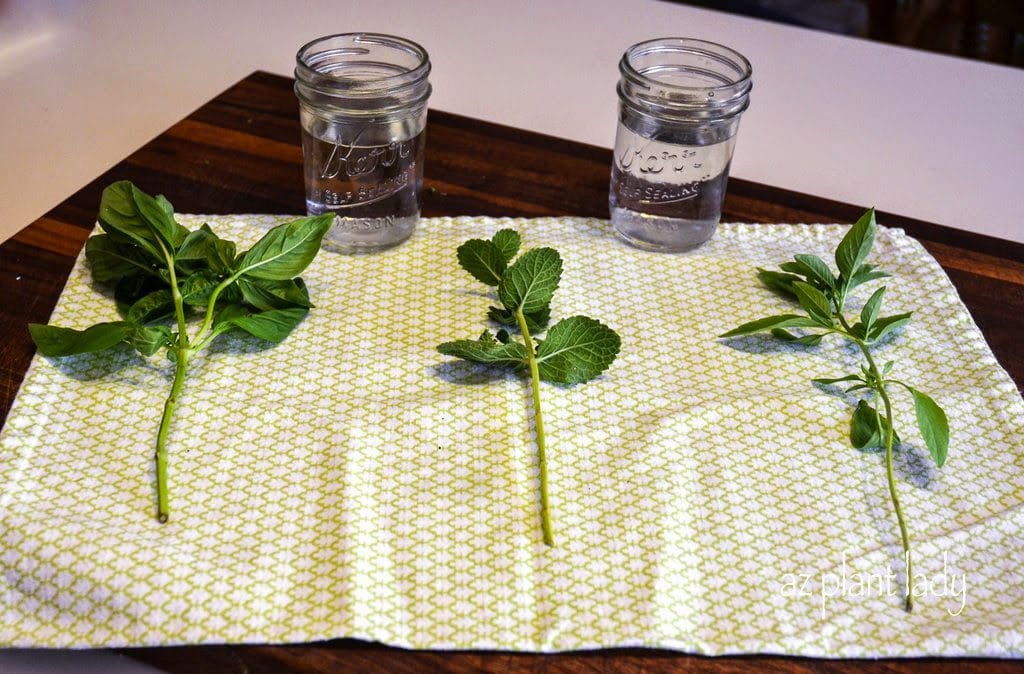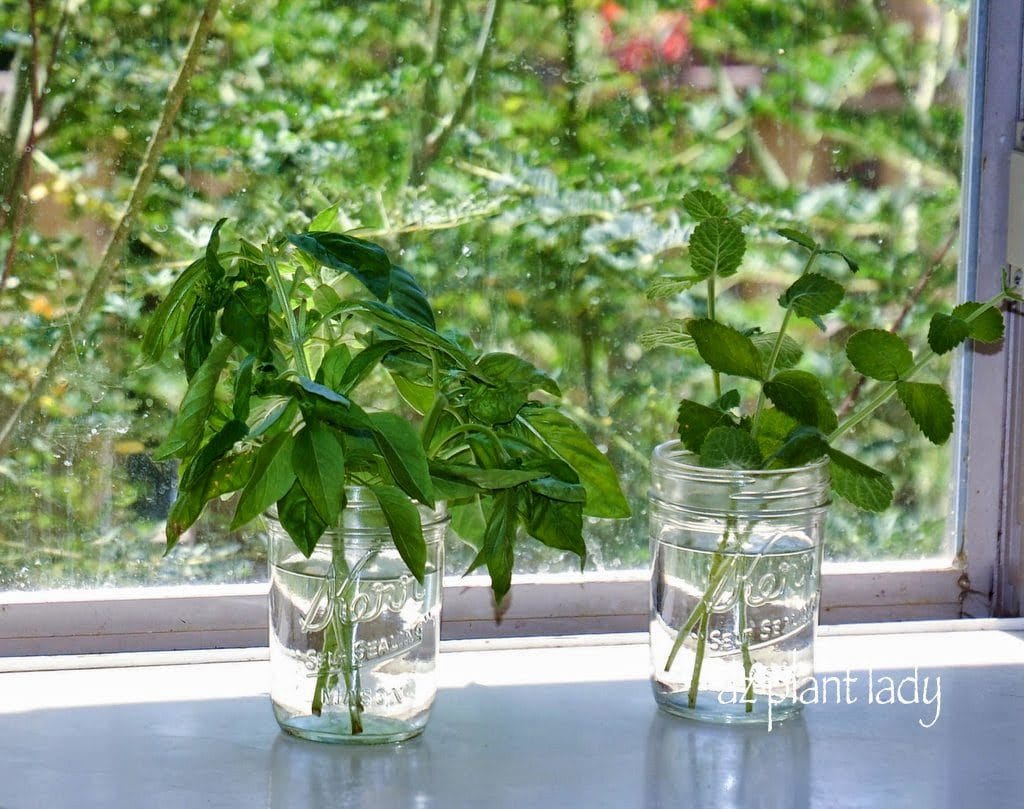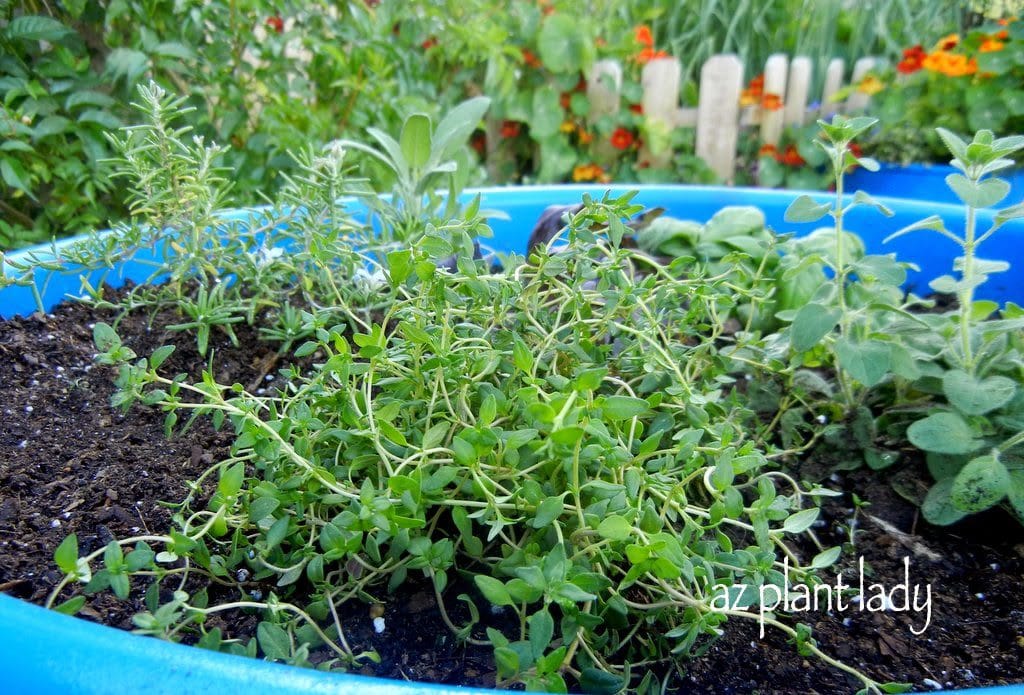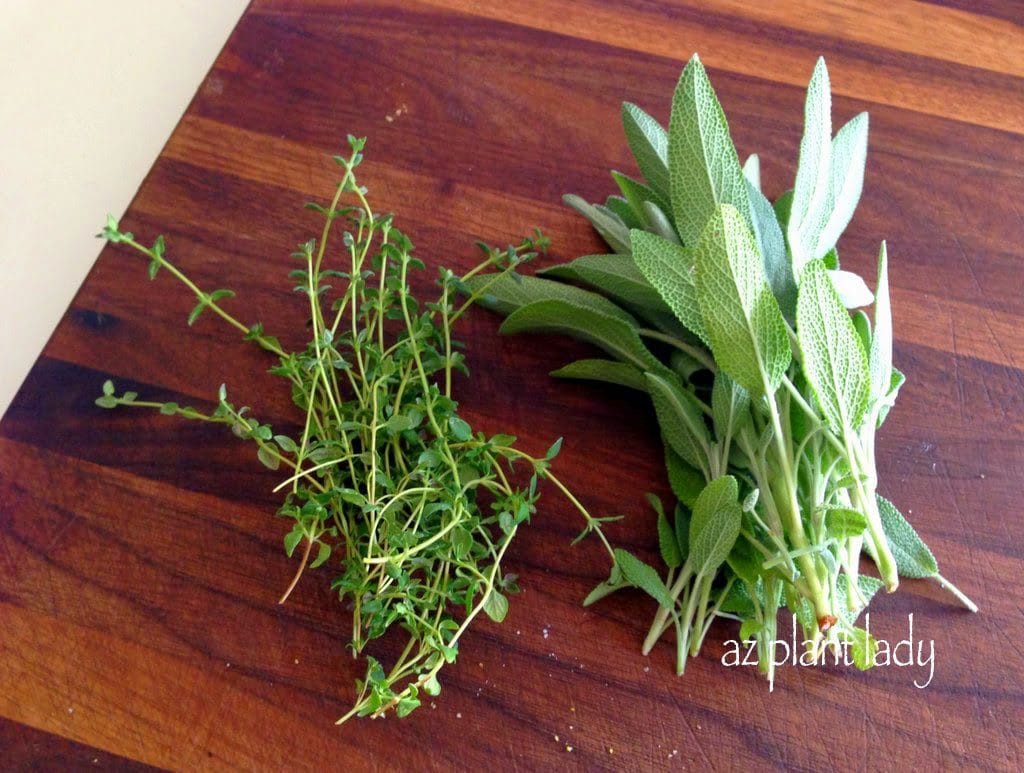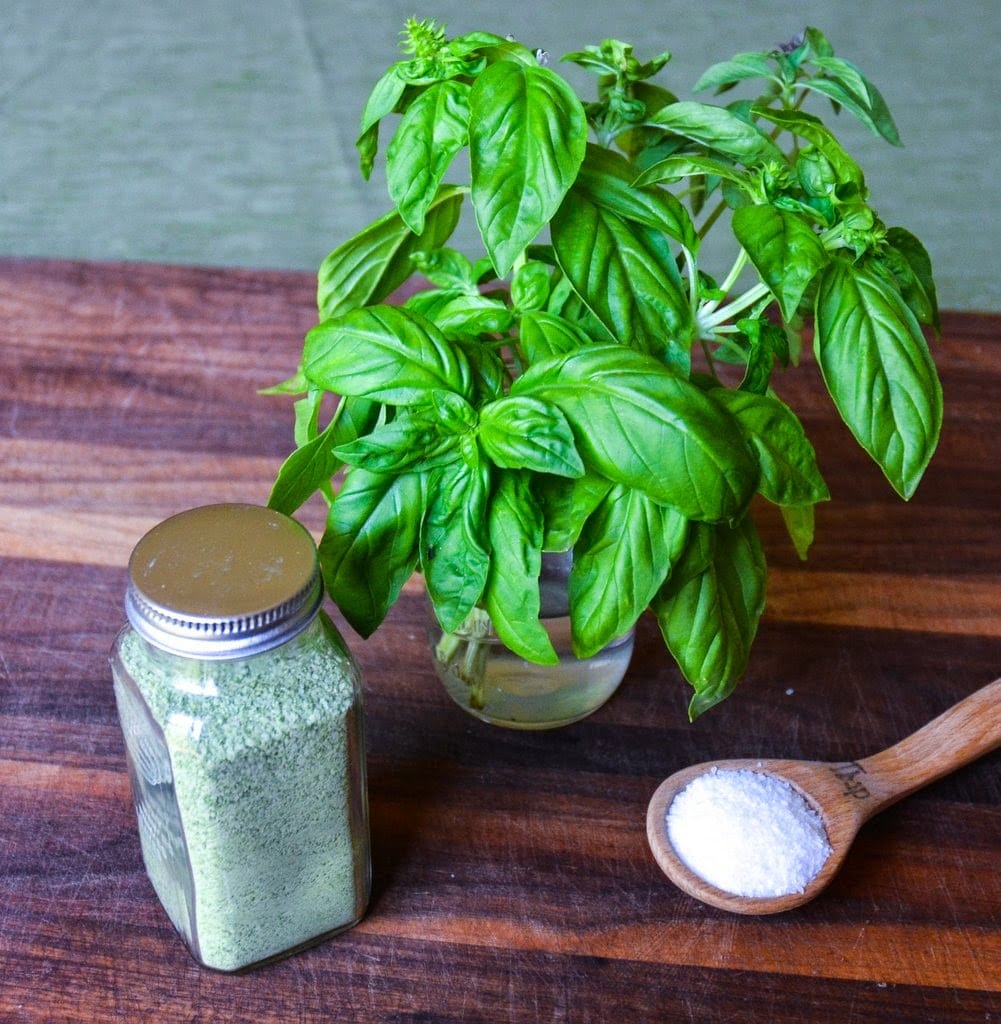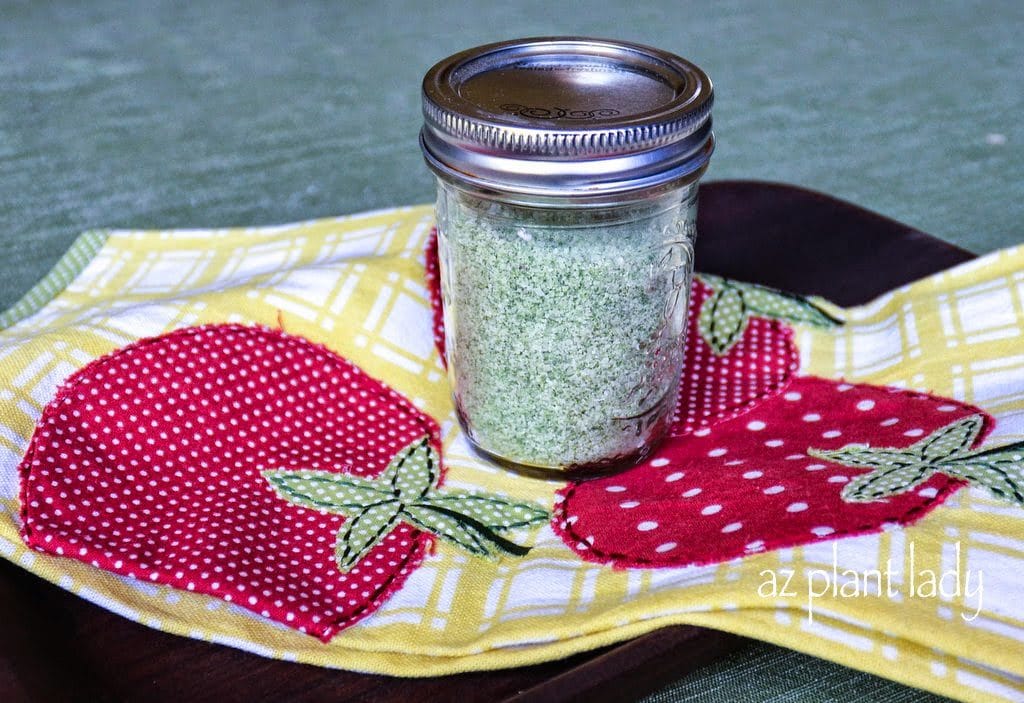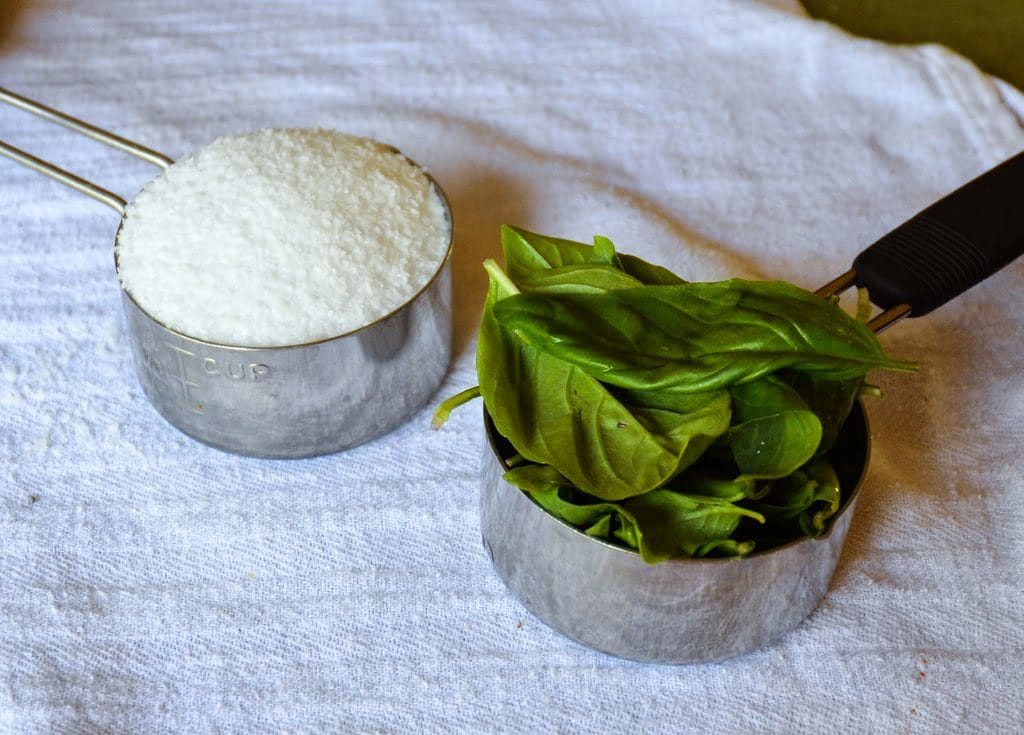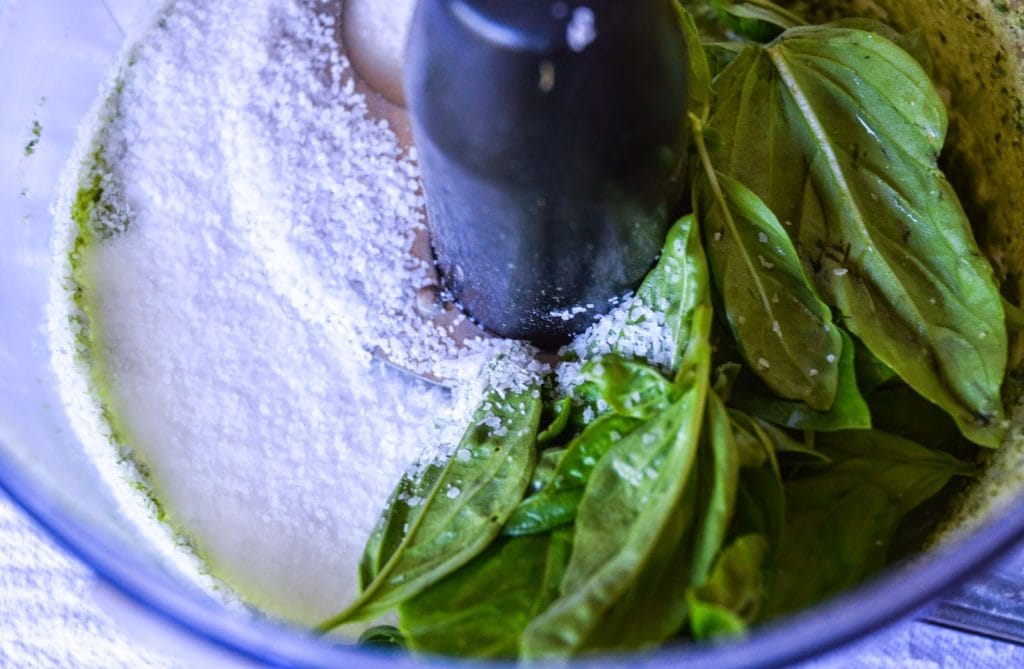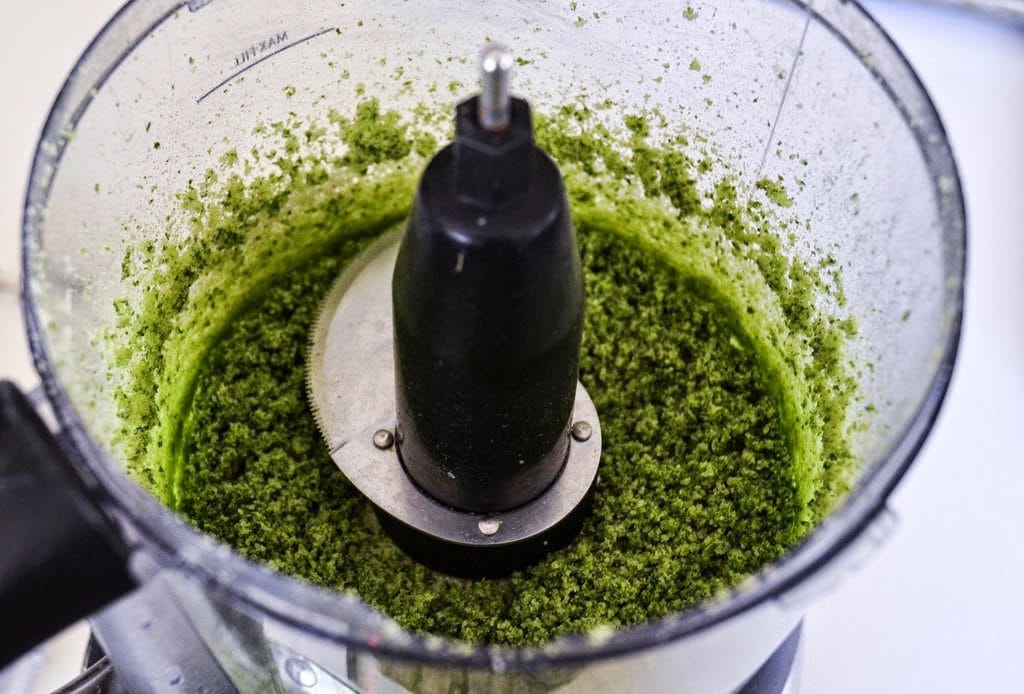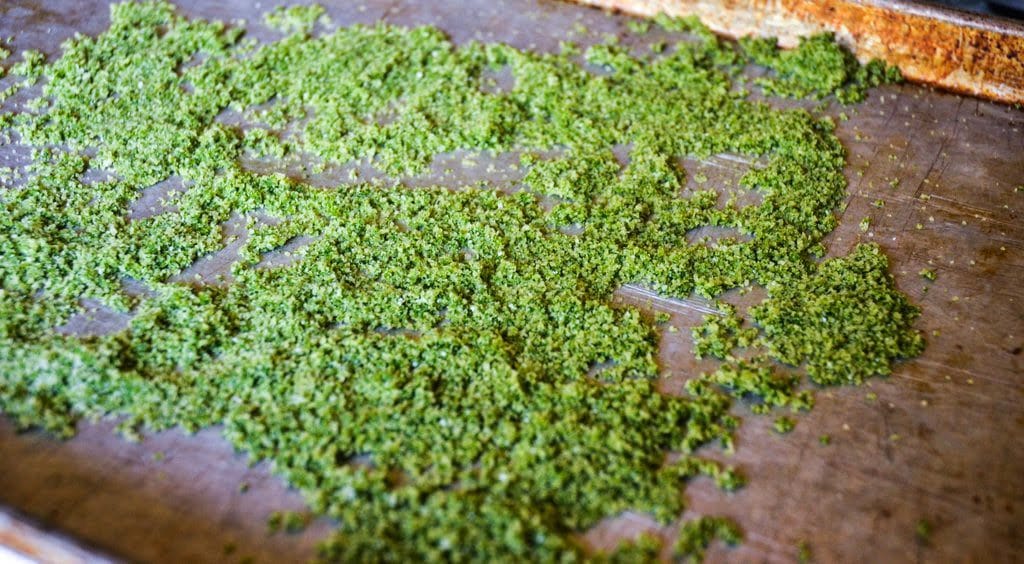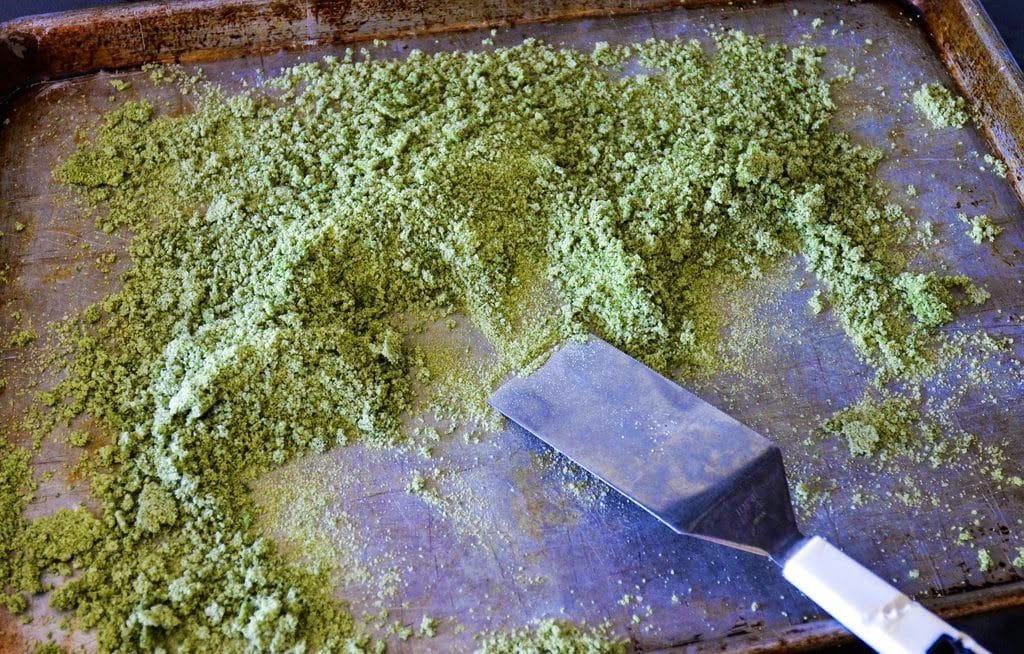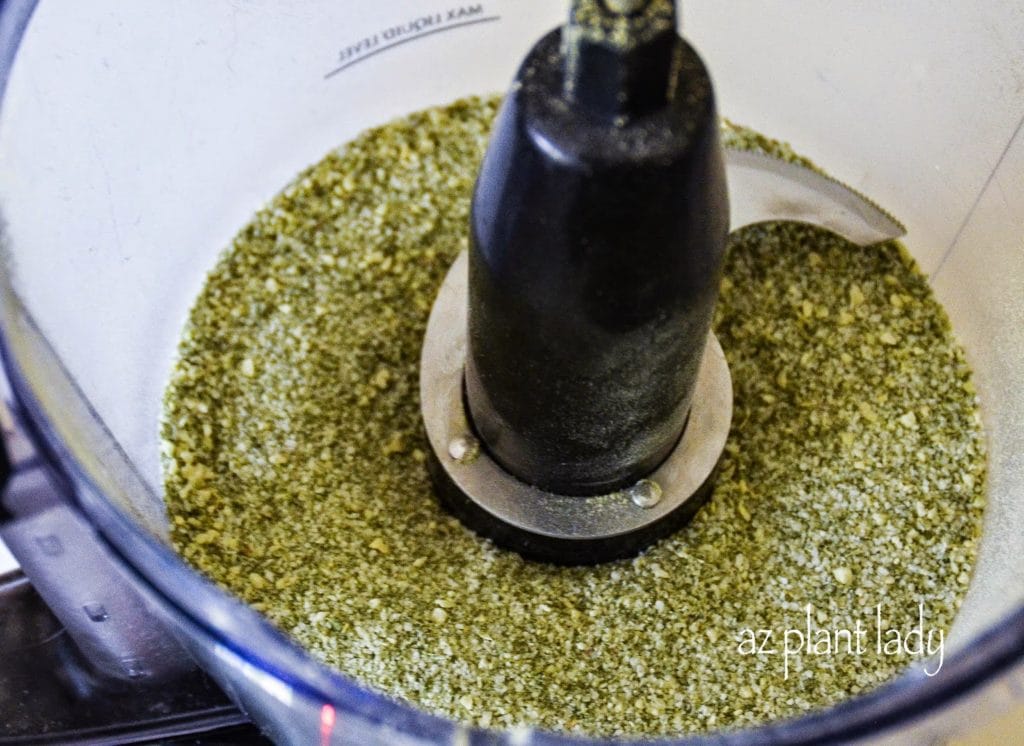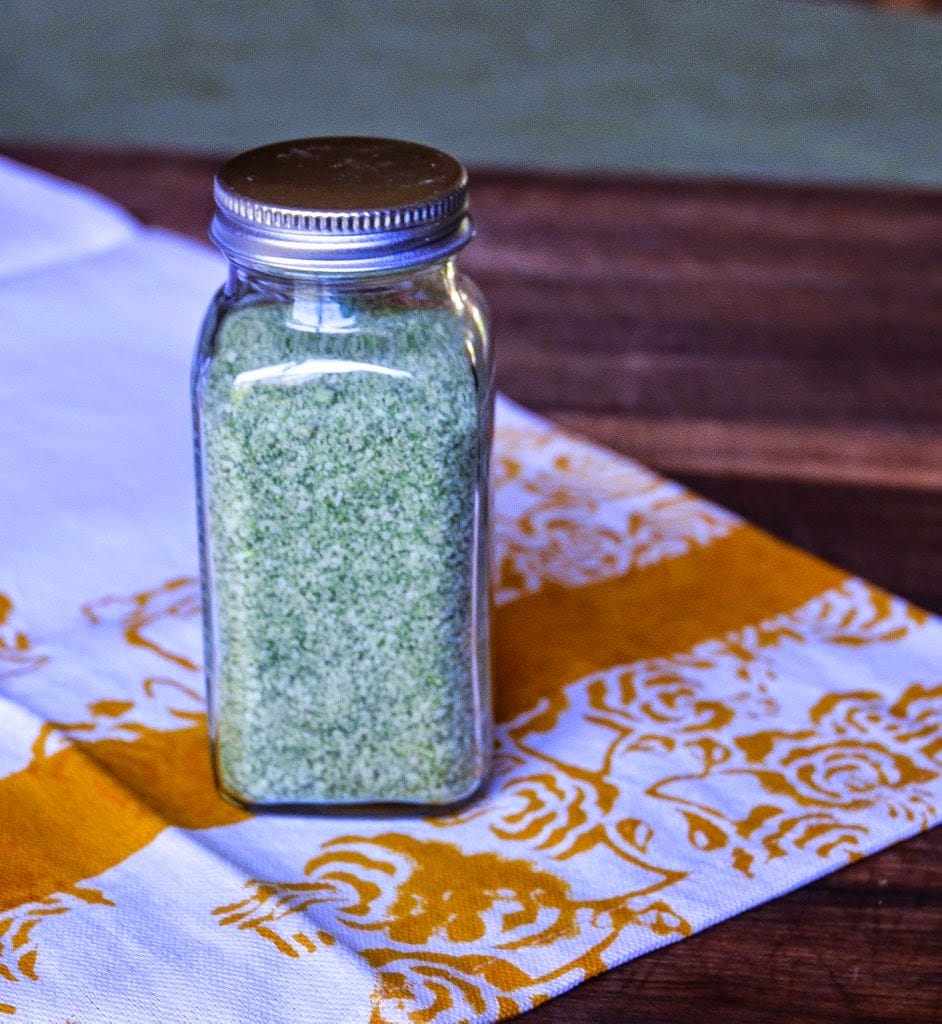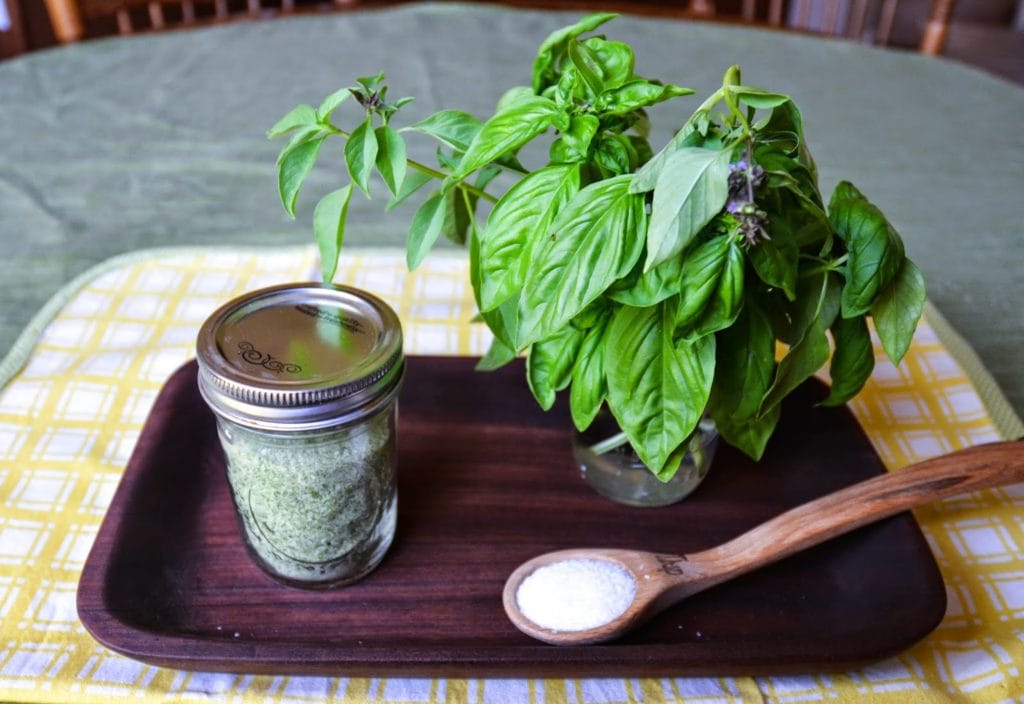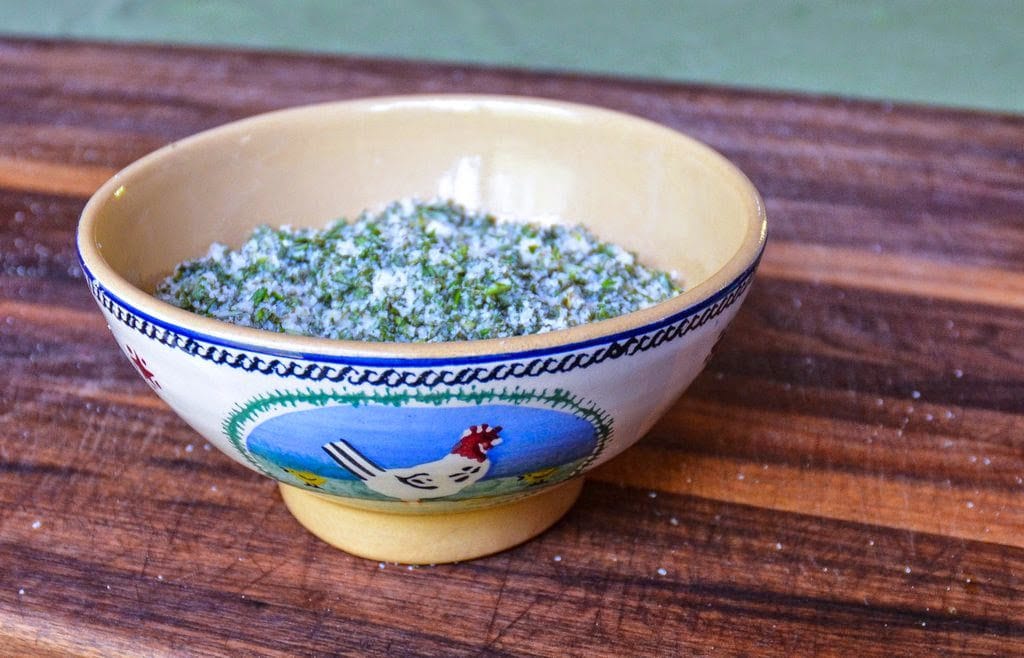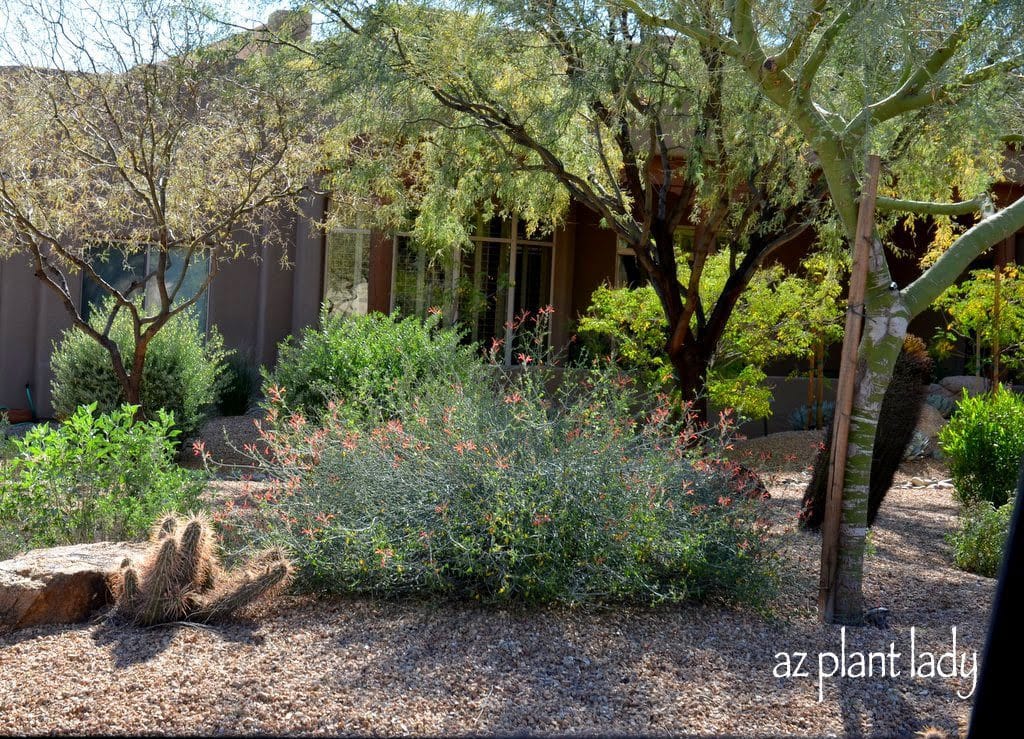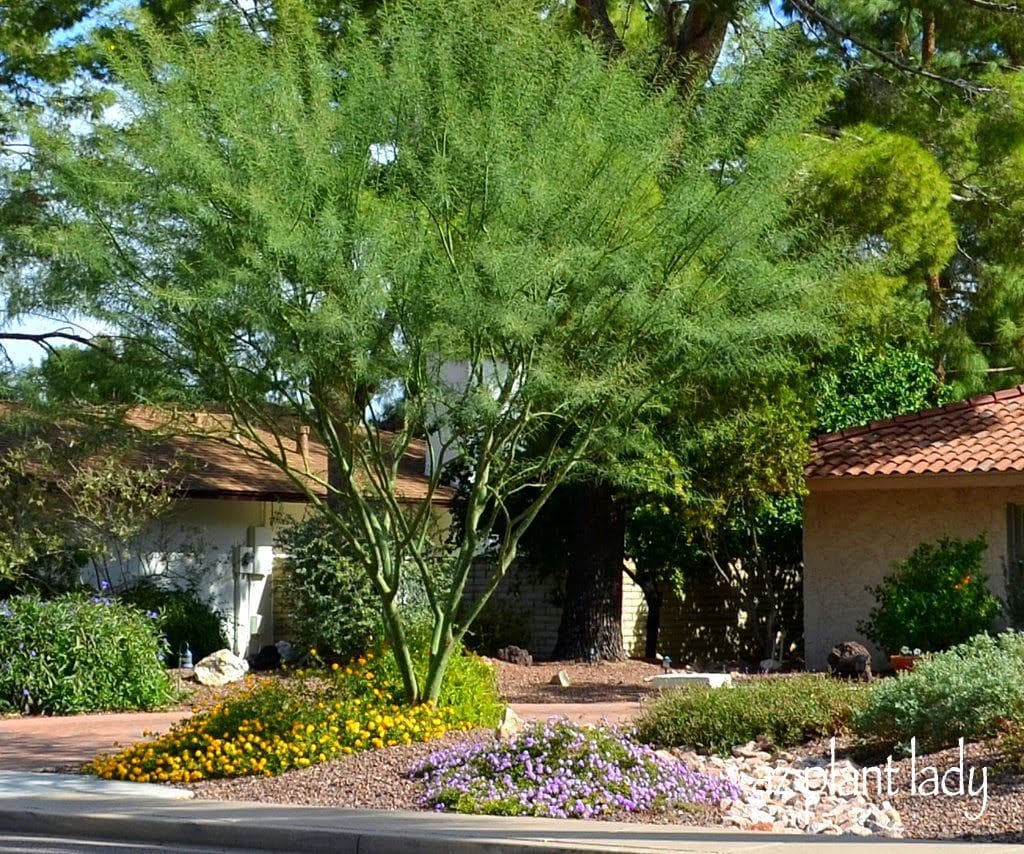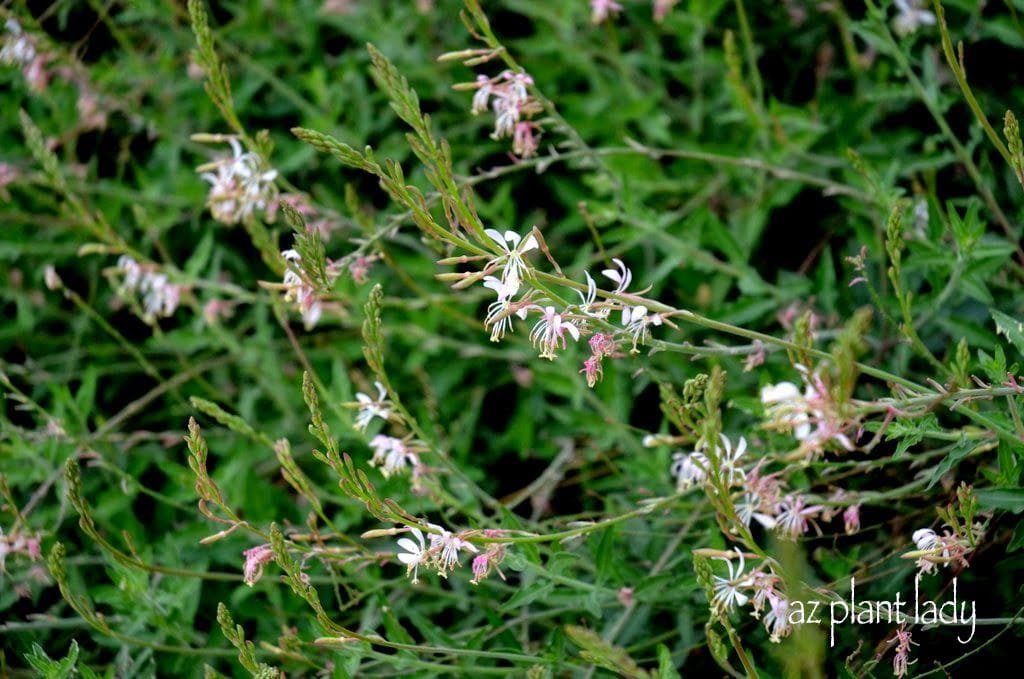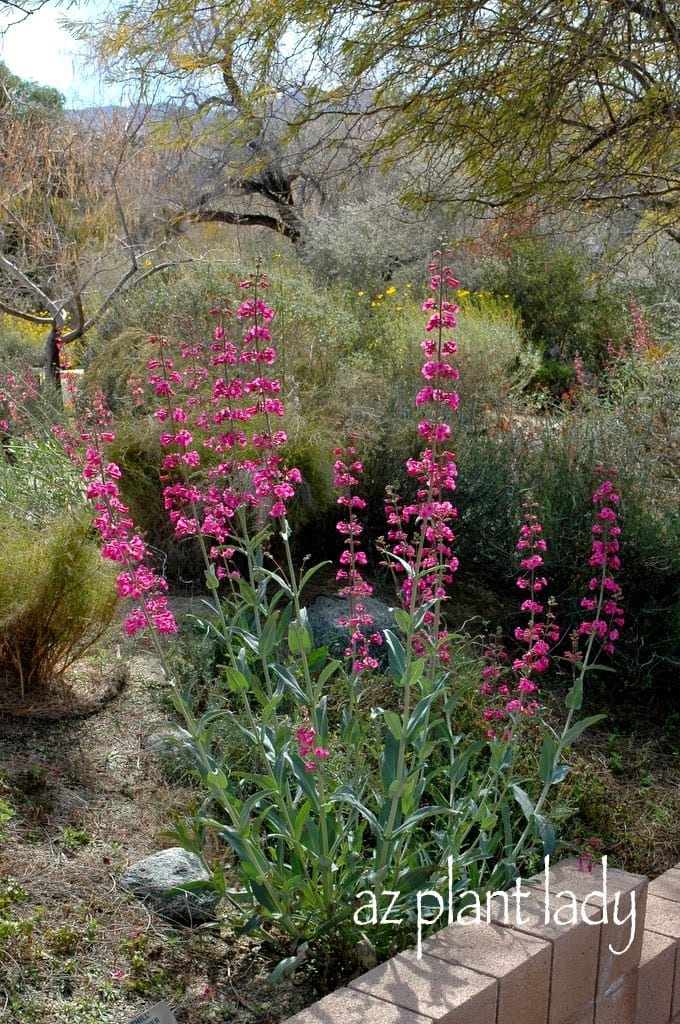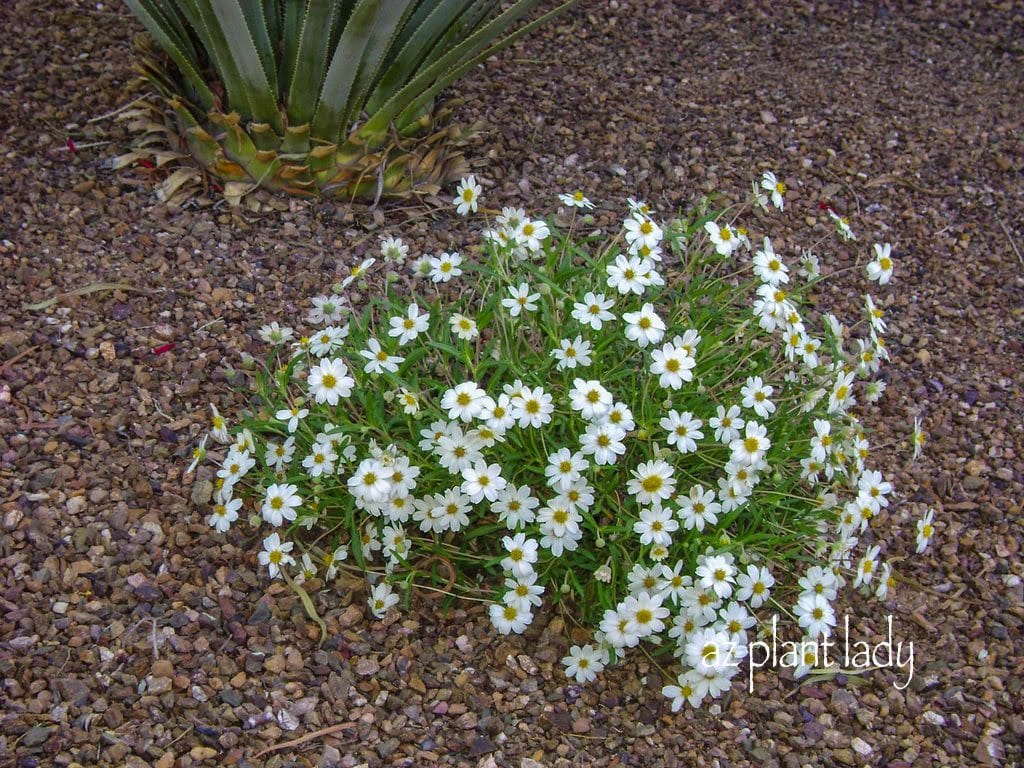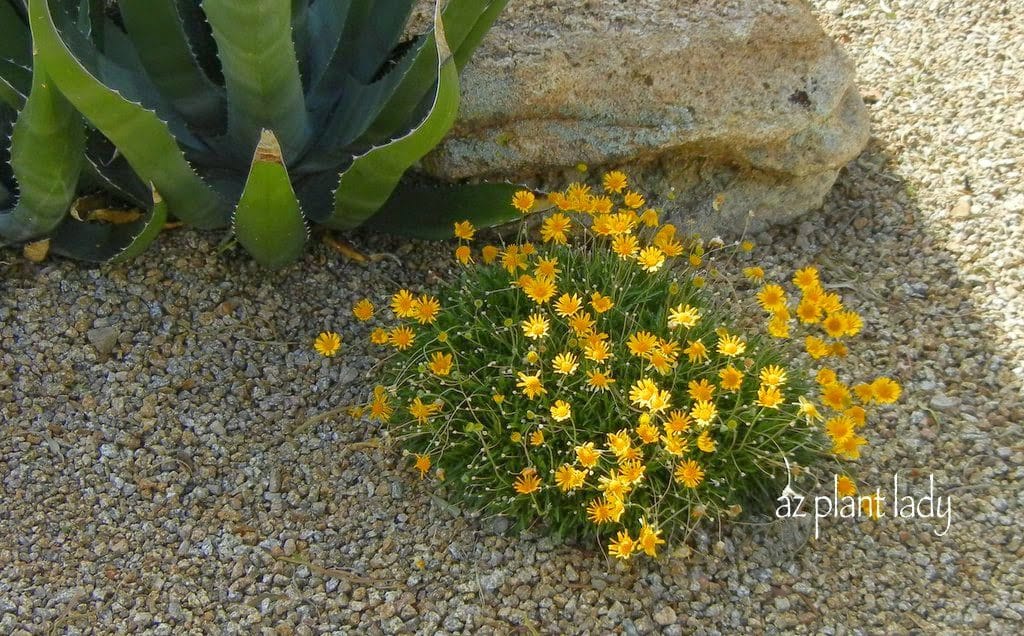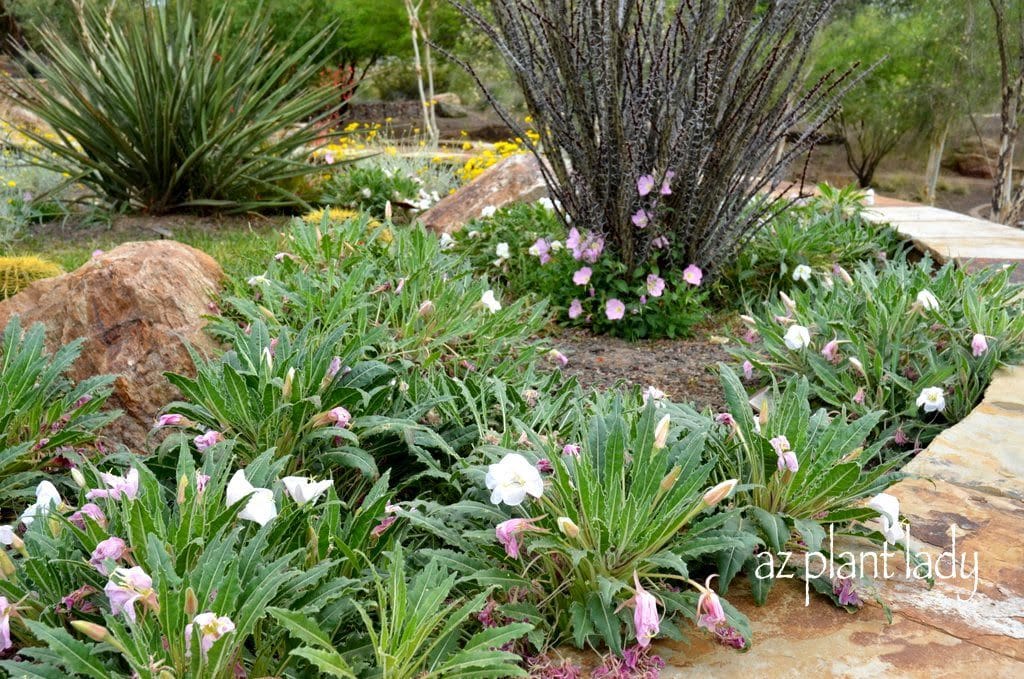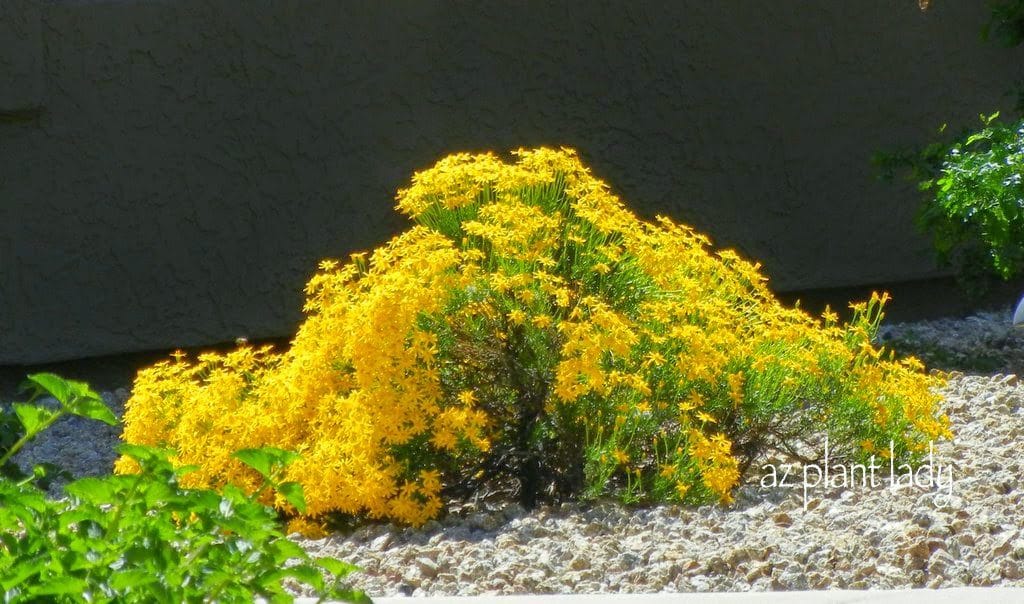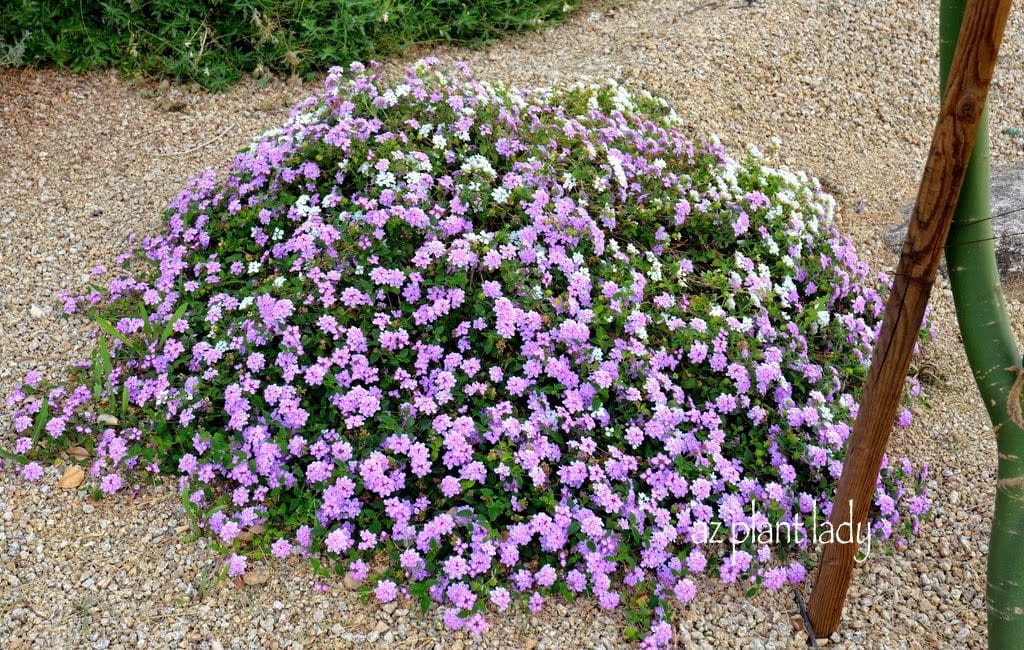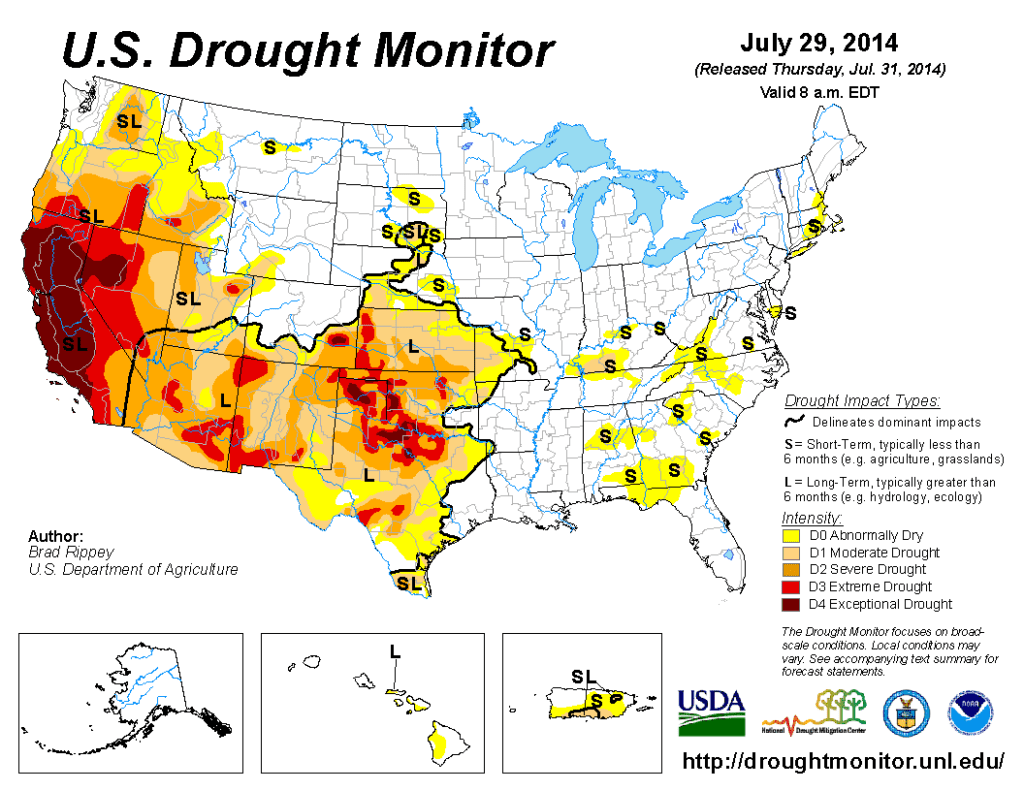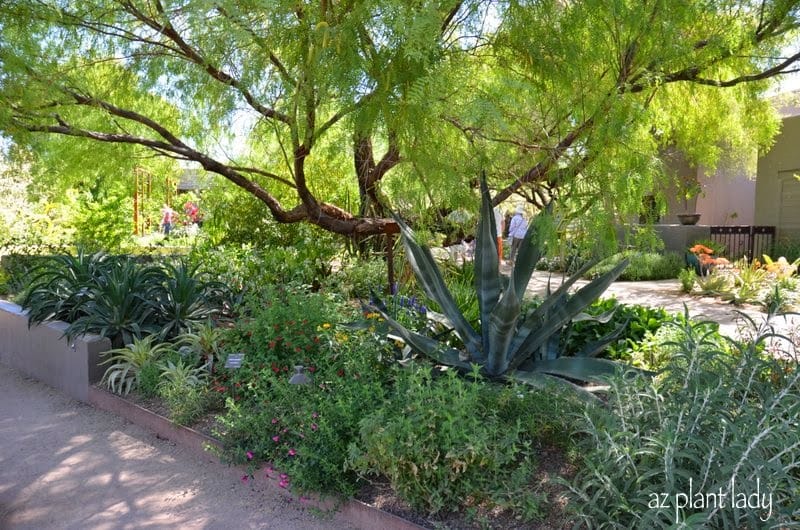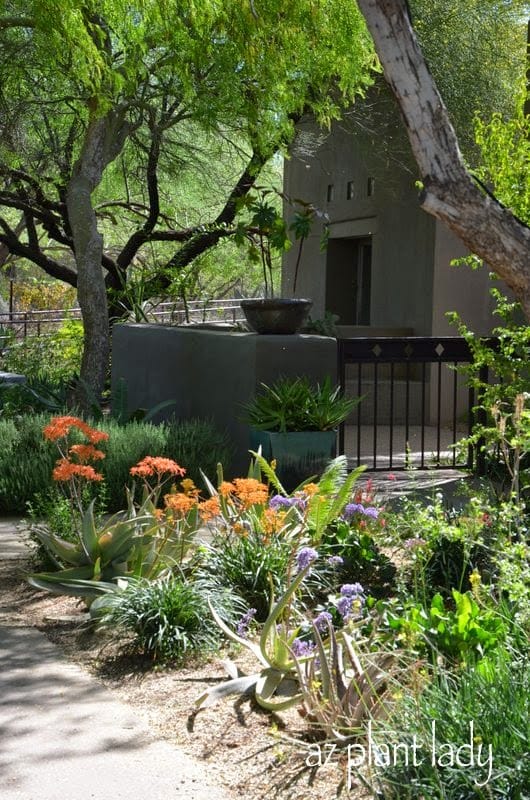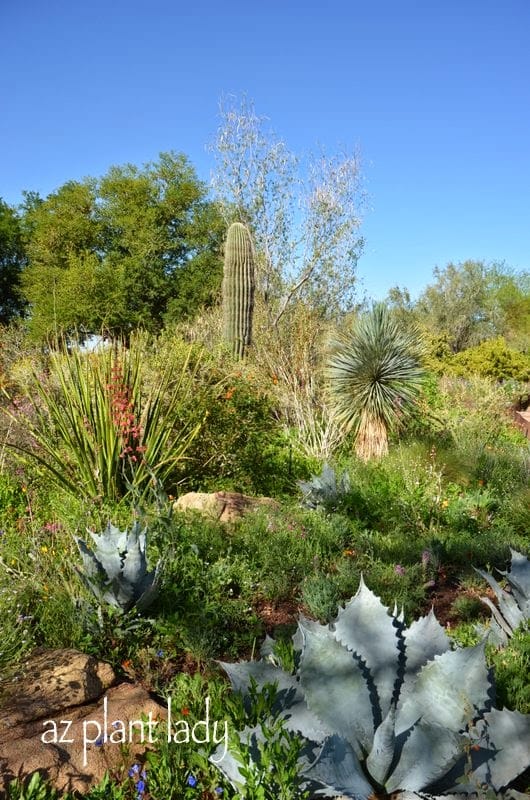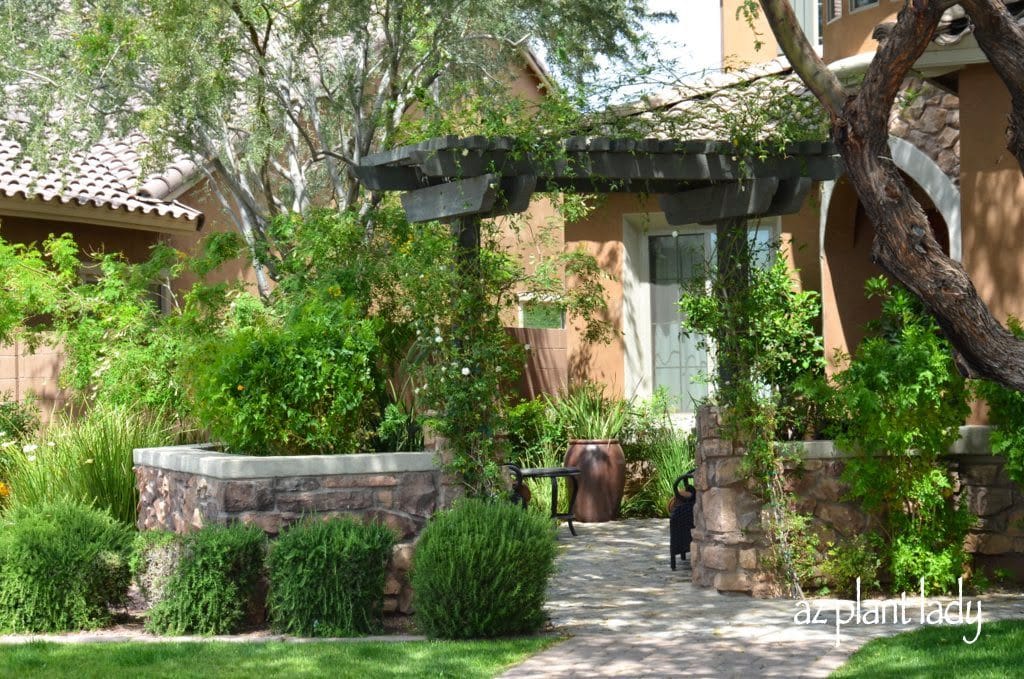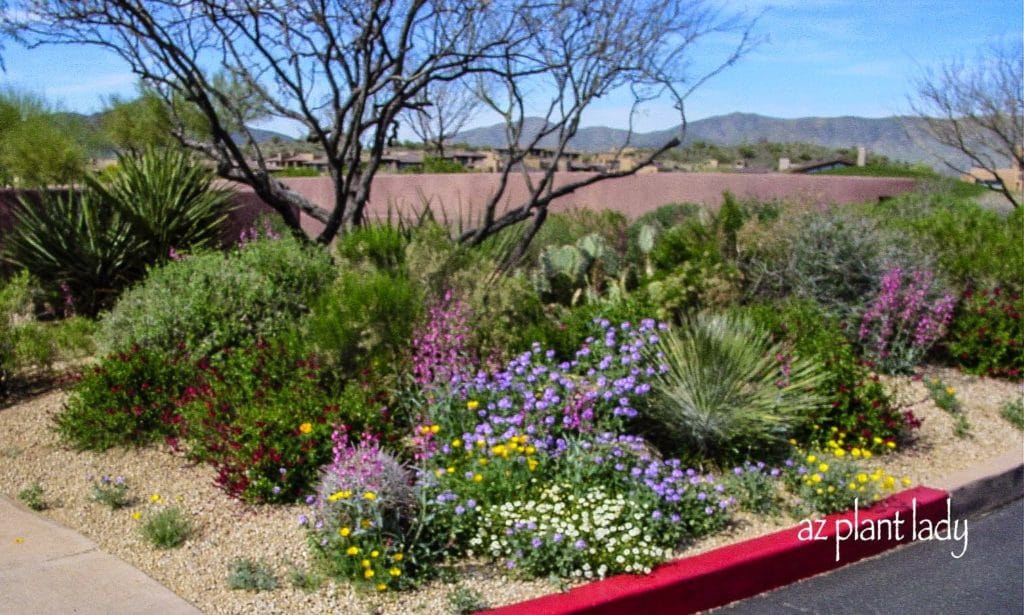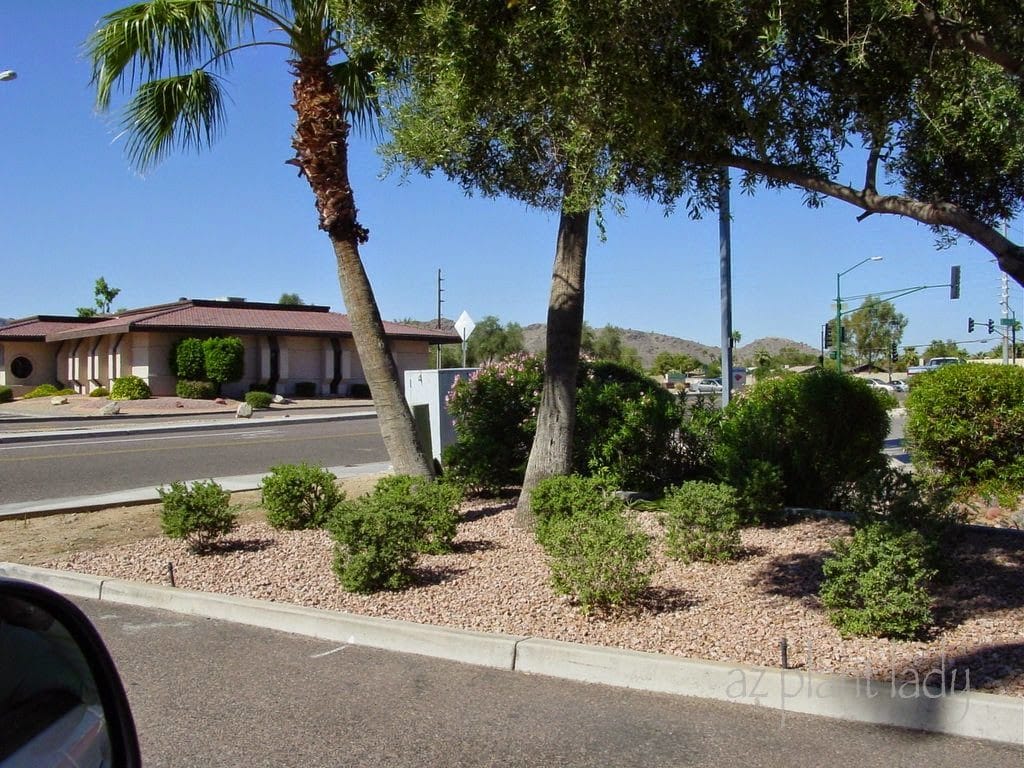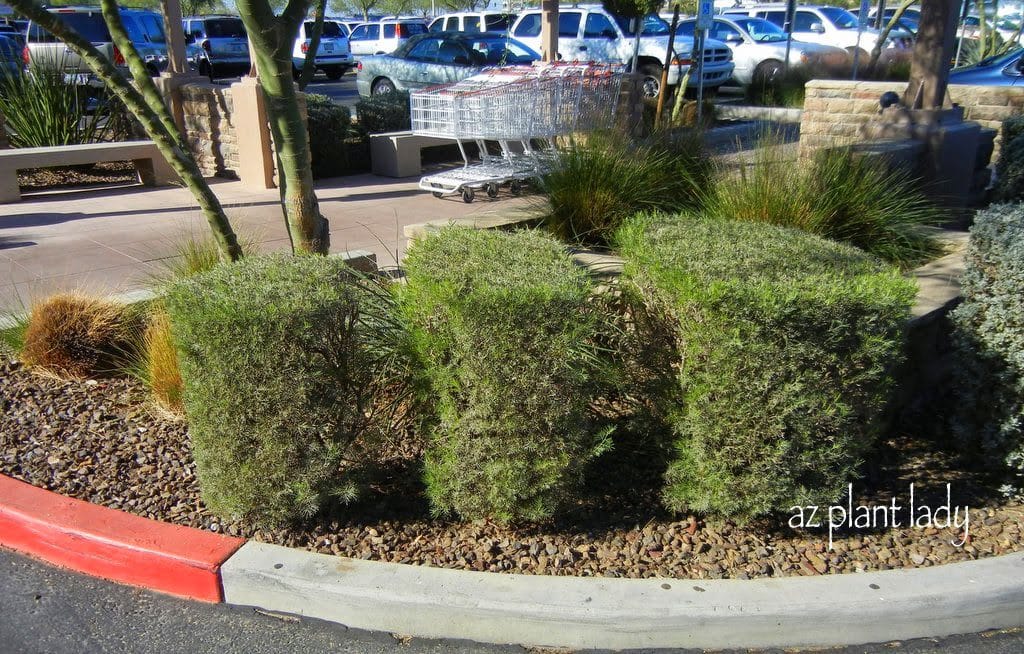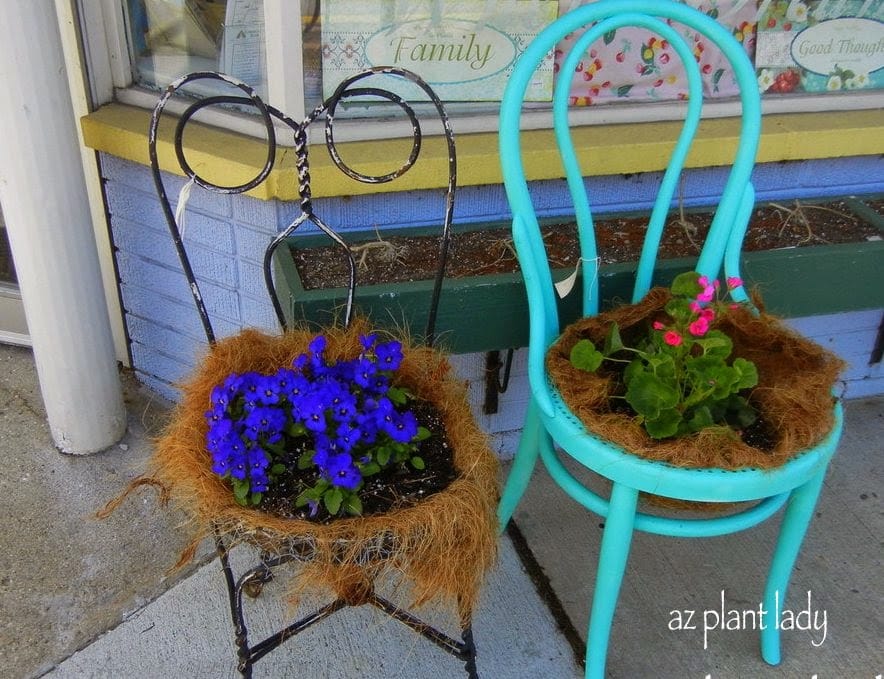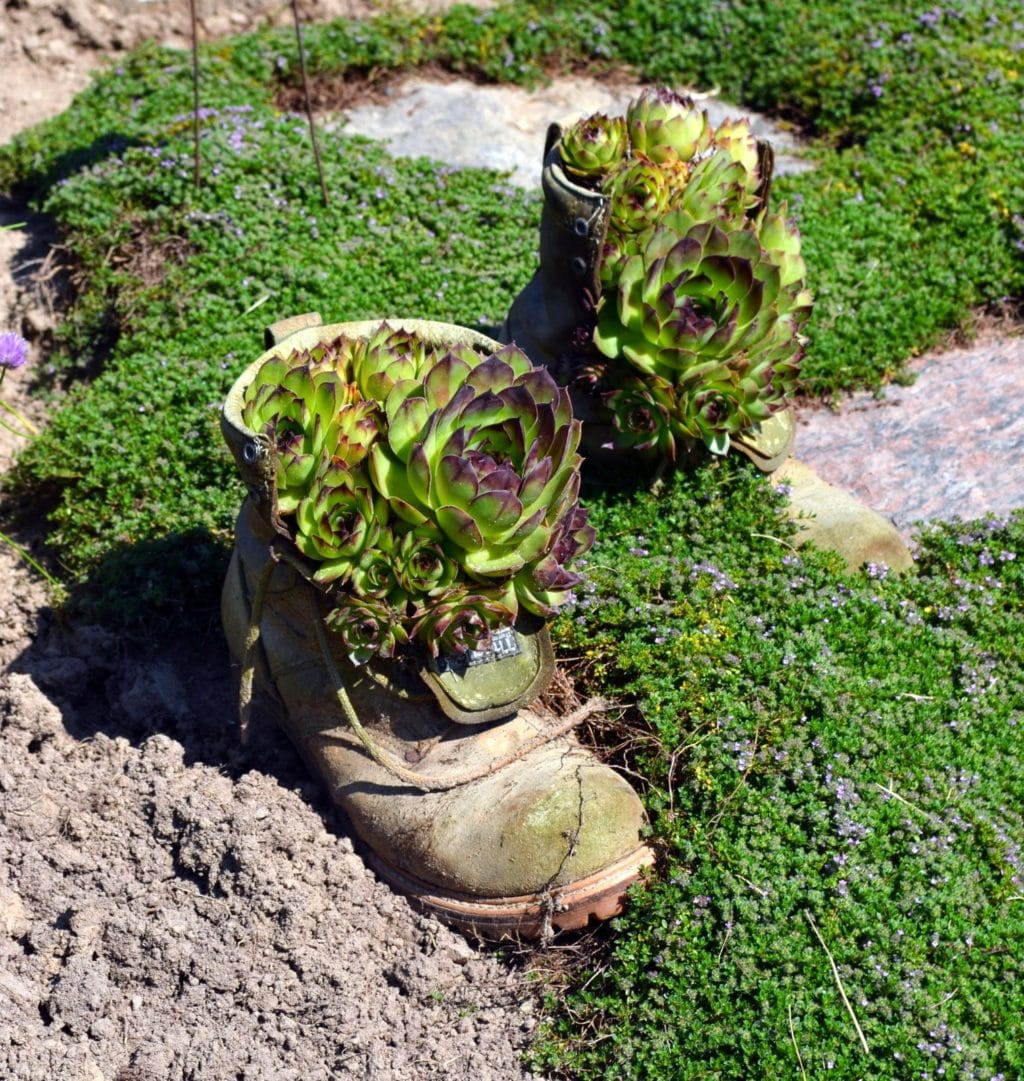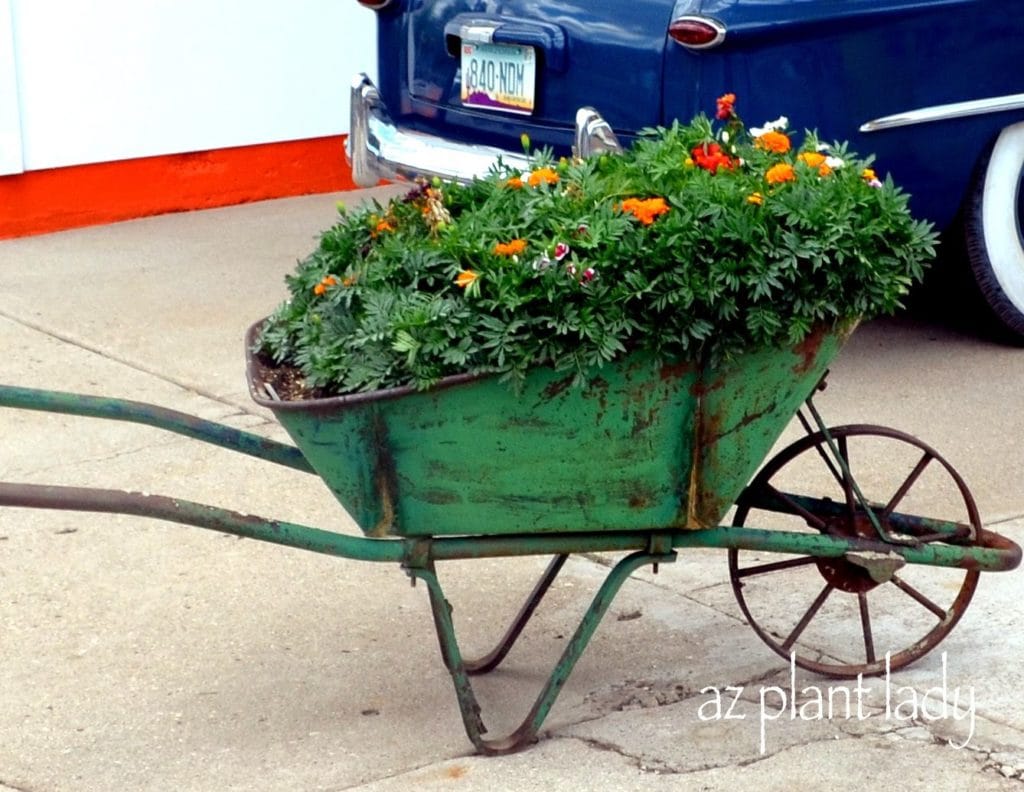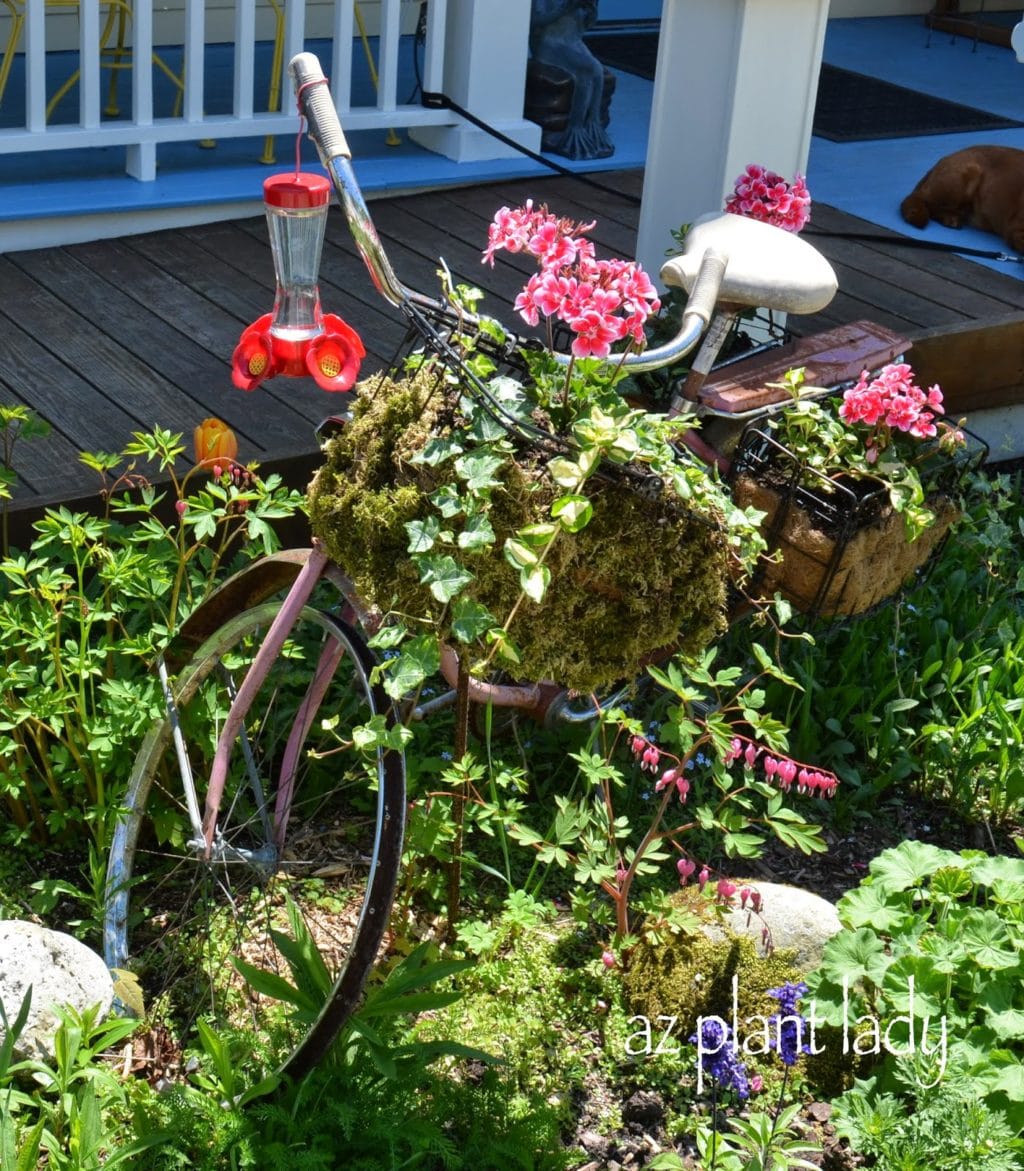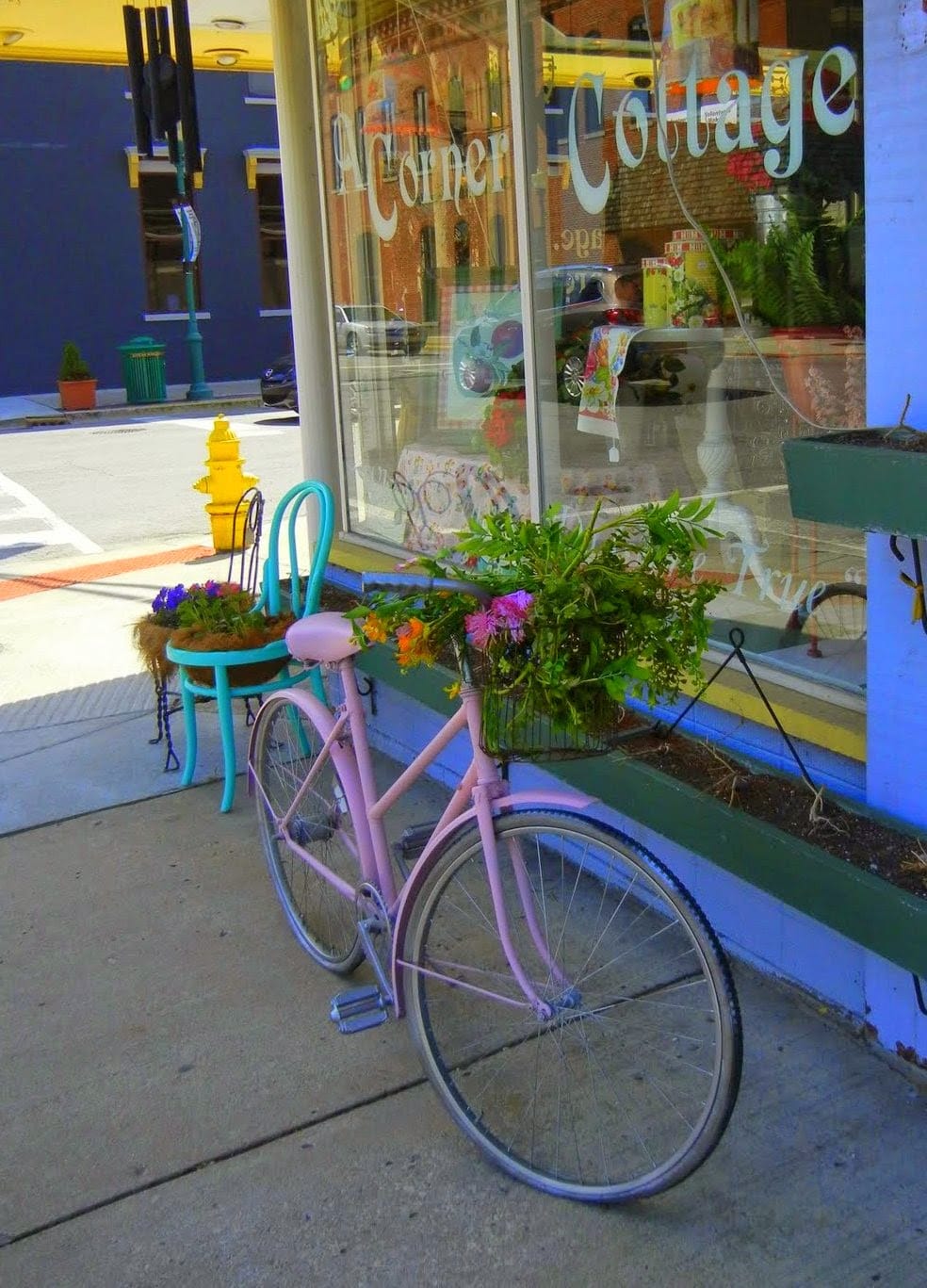I am always on the lookout for new things to make from the garden.
Recently I learned how to make specially flavored salts using herbs from my garden. ‘Herb salts’ have become a popular flavoring tool in the culinary community and they are very easy to make.
The process of making herb salts starts out looking like this…
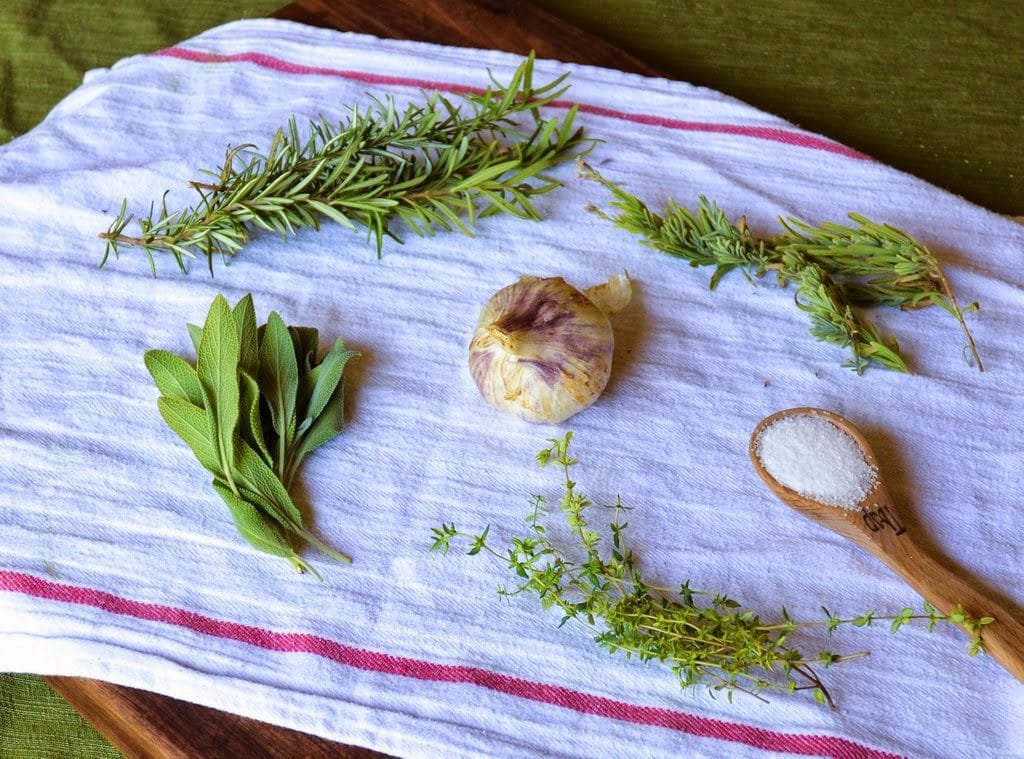
And ends up transformed into this…
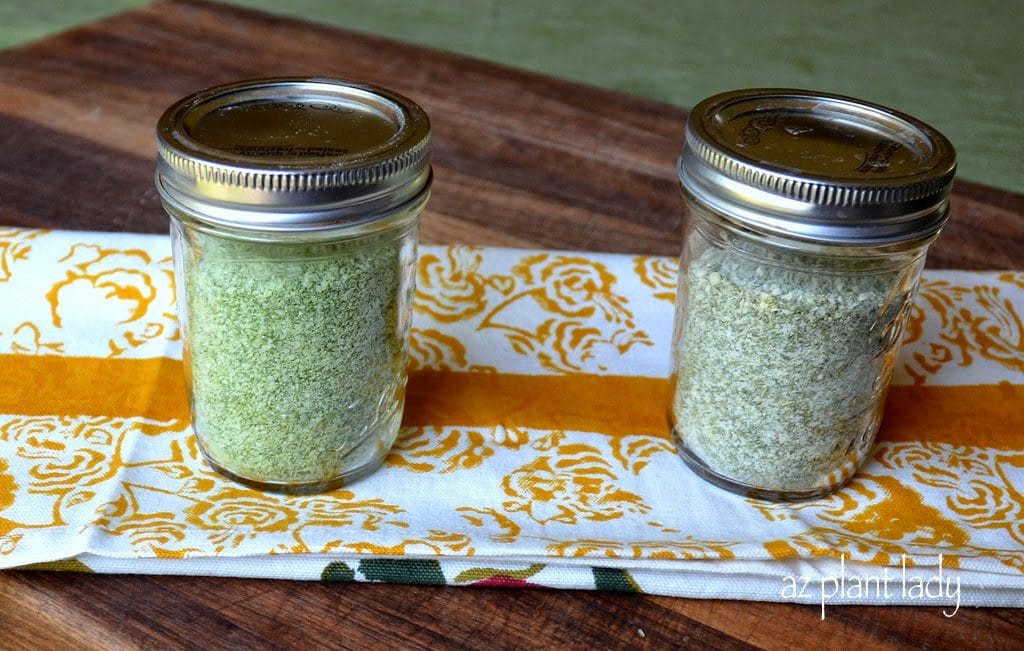
Are you interested in making your own herb salts?
Summertime means that many of my herbs are actively growing and I sometimes run of ways to use all of the fragrant leaves of them.
Herb or ‘gourmet’ salts are a great way to preserve herbs while adding a new twist to flavoring my favorite foods.
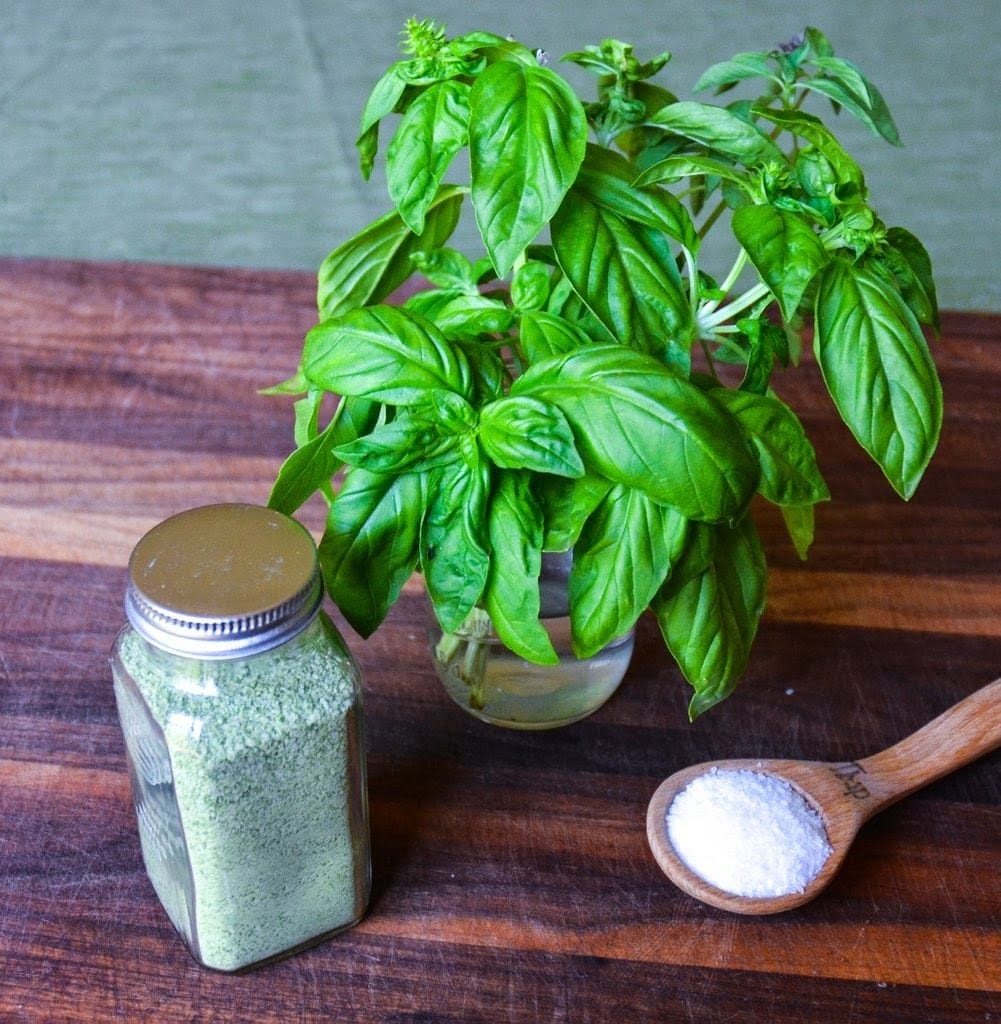
Photo: Basil Salt
In my last post, I shared how to make basil salt using two ingredients – fresh basil leaves and kosher salt.
Today, I’d love to show you how to make your own unique herb salt blend.
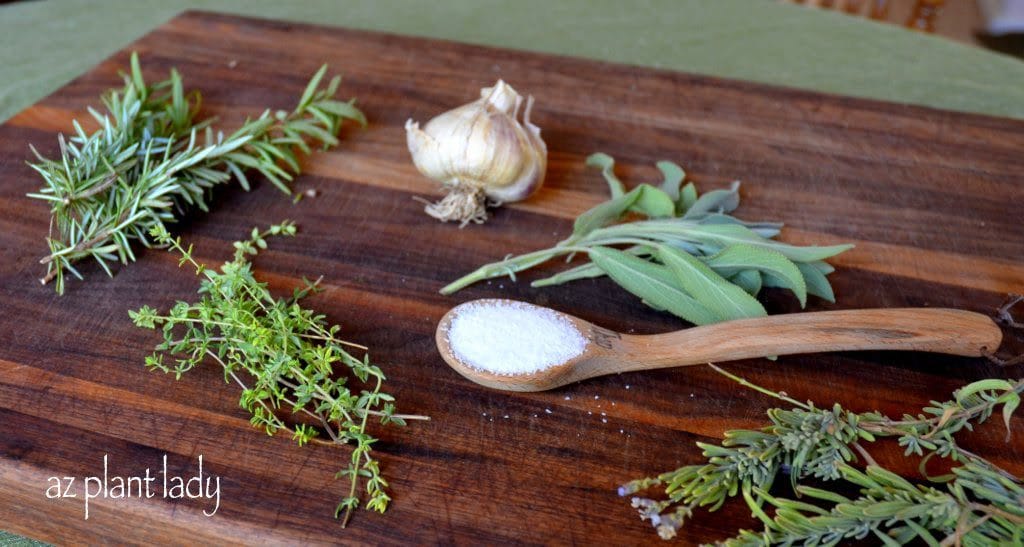
For my herb salt blend, I went out into the garden and looked for a variety of herbs that I love to cook with. I found rosemary, sageand thyme. I then grabbed a head of garlic and kosher salt. I must admit that I was thrilled that I had all these herbs growing in my garden. I grew the garlic too!
For equipment, you should have a cutting board, a sharp knife for chopping, a baking sheet and a glass jar with a lid.
You can make this recipe using a food processor, but it is optional.
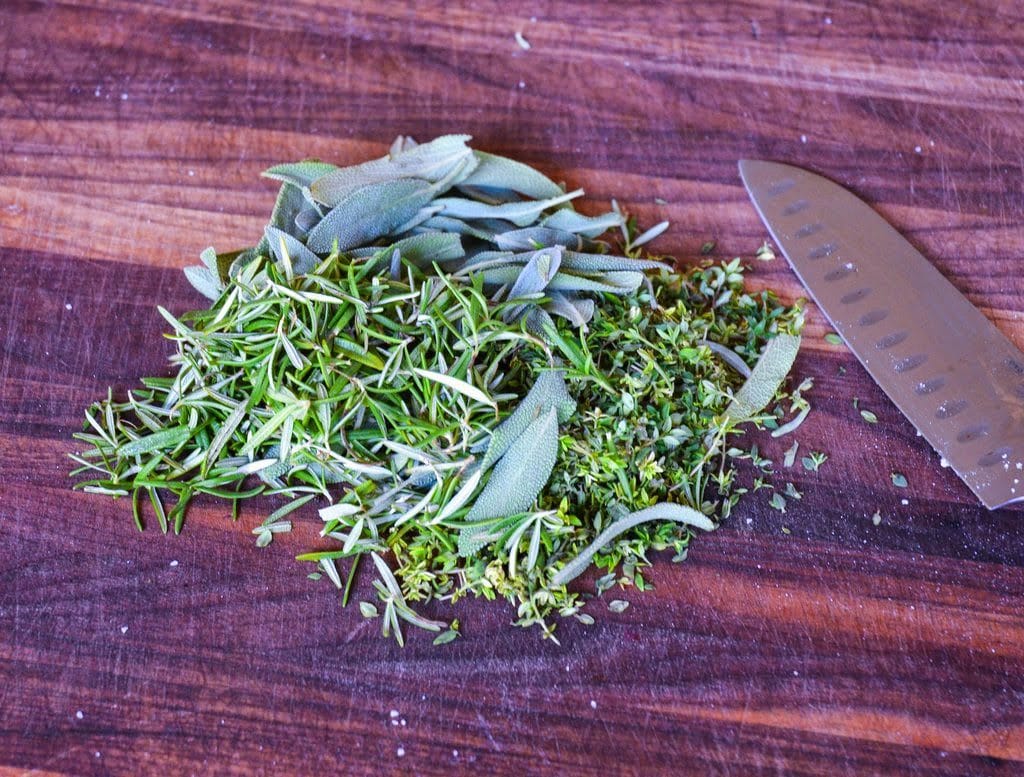
1. You will need 2/3 cup rosemary, 2/3 cup sage and 2/3 cup thyme leaves. These are the amounts I used to get the flavor I liked, but you can play around with the ratio of each herb or choose different herbs to get the flavor you want.
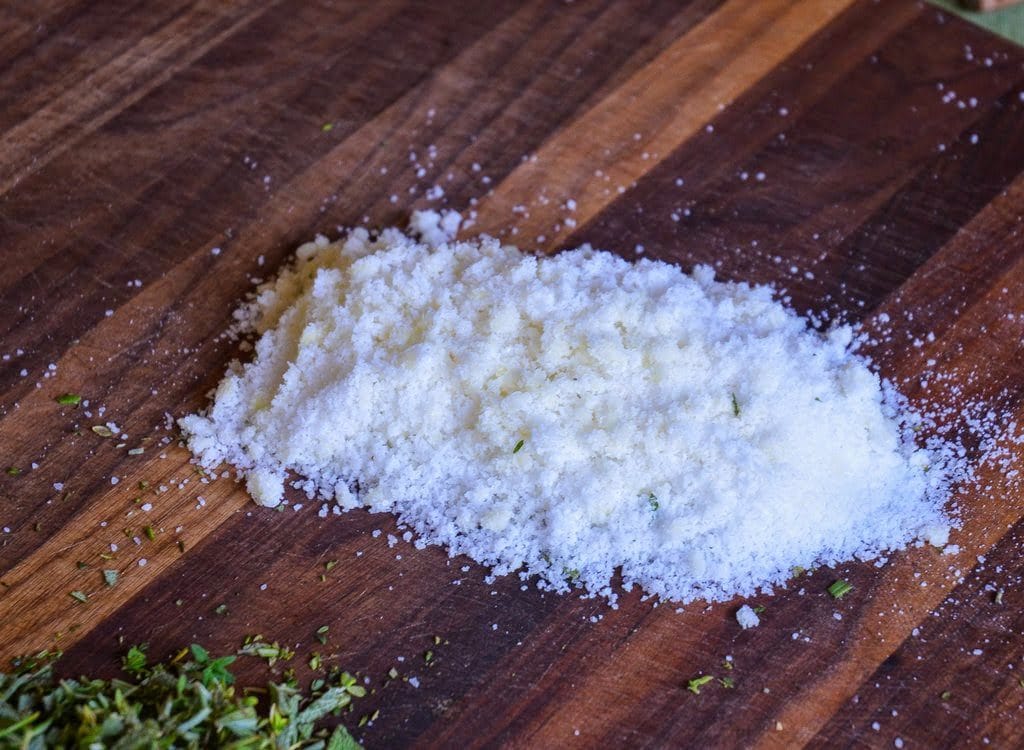
2. Place 1/2 cup kosher salt on your cutting board and add 5 peeled garlic cloves and chop them together. The garlic should be finely minced at this point.
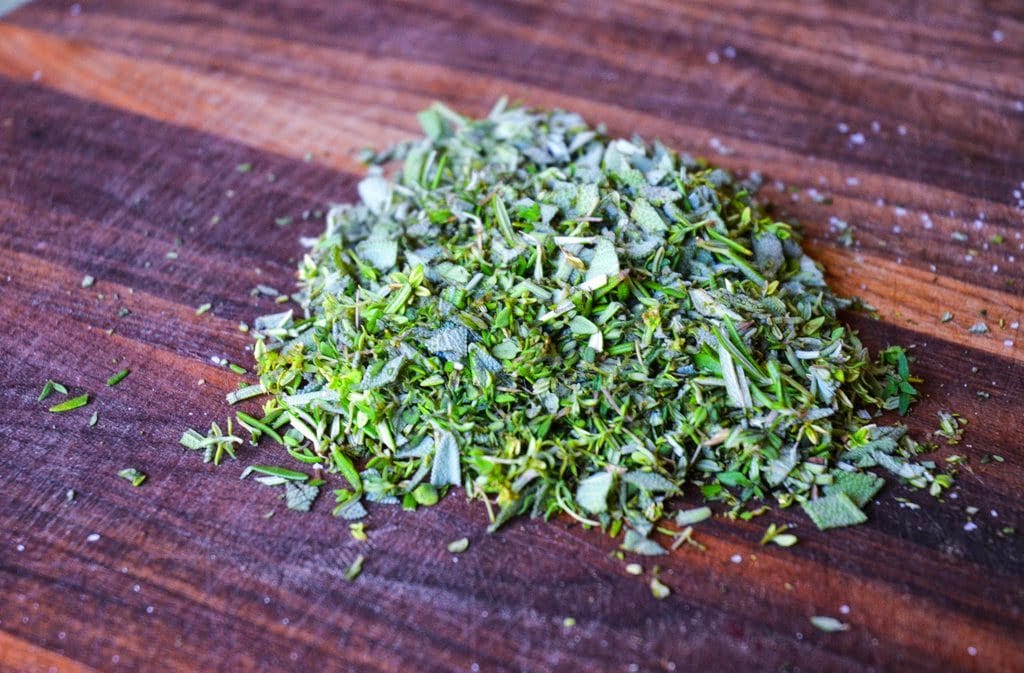
3. Chop all of the herbs together.
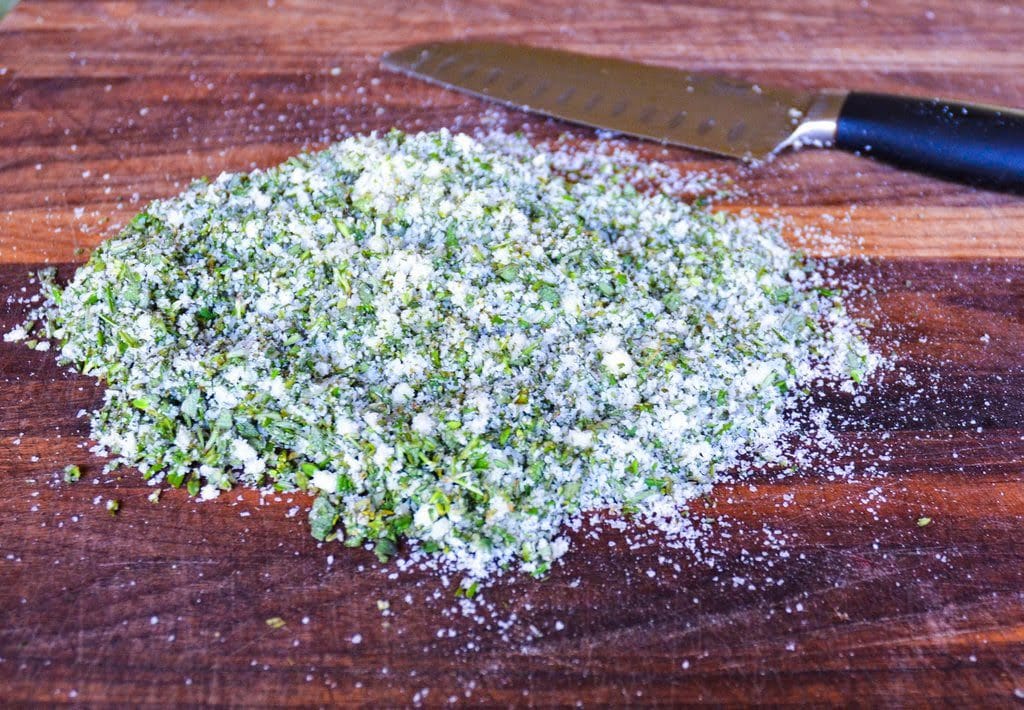
4. Combine the salt/garlic and the herbs together and continue chopping until finely chopped.
**You can use a food processor for steps 3 & 4 instead of chopping. Simply put all ingredients in at once and pulse for 30 seconds.
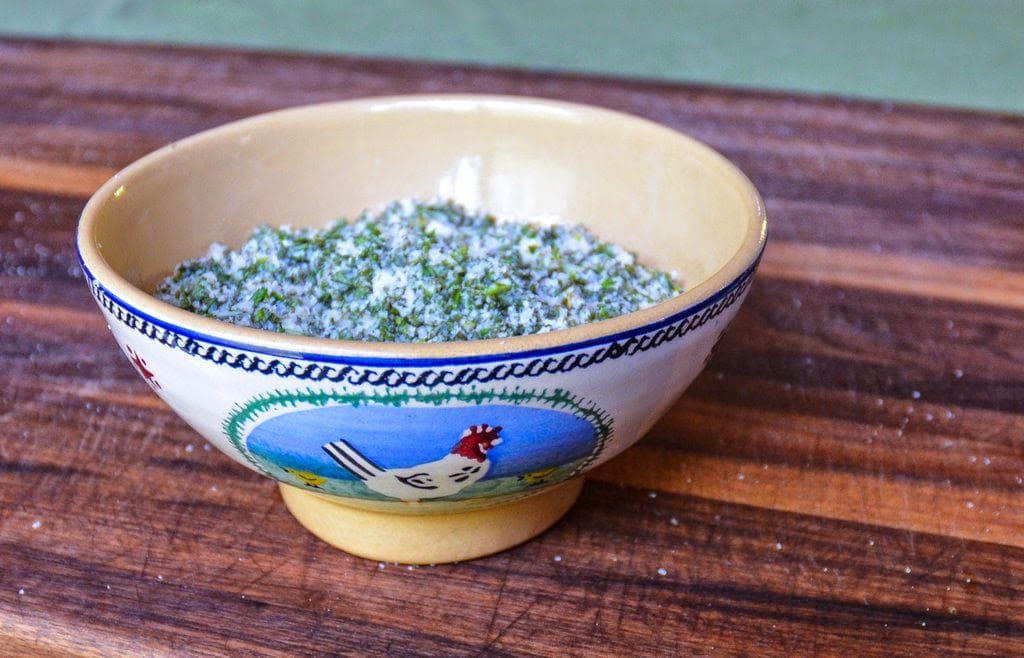
At this point you can use your herb salt to flavor a roast of beef, chicken or pork before cooking or to flavor roasted vegetables. But, if you aren’t using the herb salt right away, continue on…
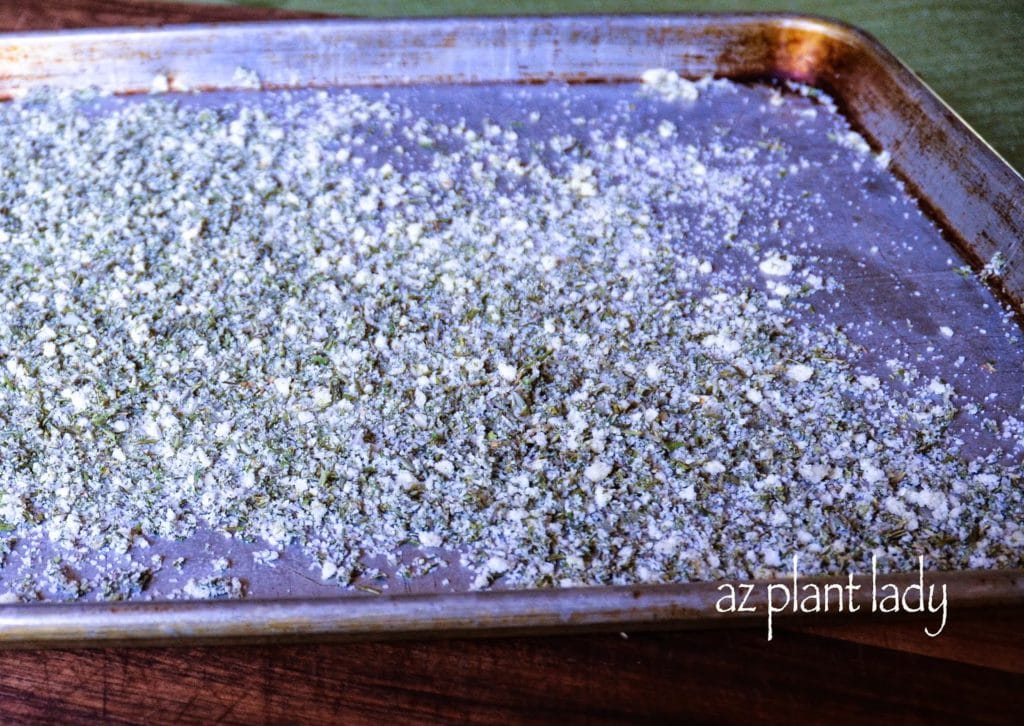
5. Put your herb salt mixture onto a baking sheet in a thin layer and bake in a 200 degree oven for 30 minutes. This step dries out the herb mixture. You can also allow it to air dry over a couple of days instead of putting it into the oven.
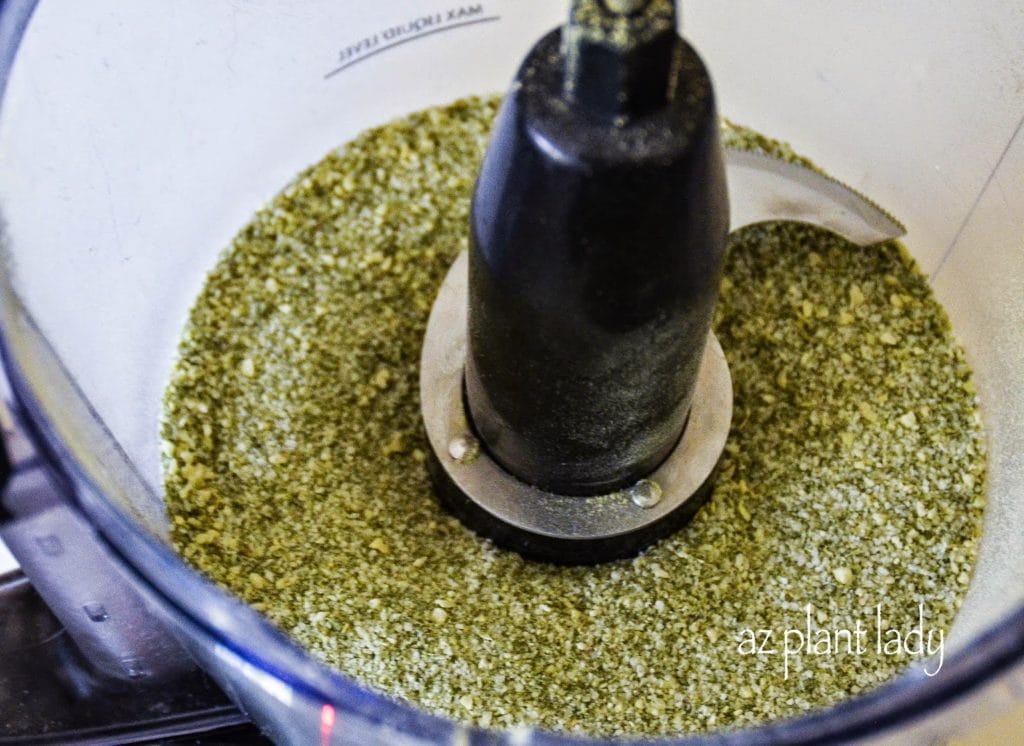
6. Place your dried mixture into a food processor and pulse for 30 seconds to get rid of any lumps.
If you don’t have a food processor, you can put the dried mixture into a Ziploc bag and roll it with a rolling pin until it is finely ground up.
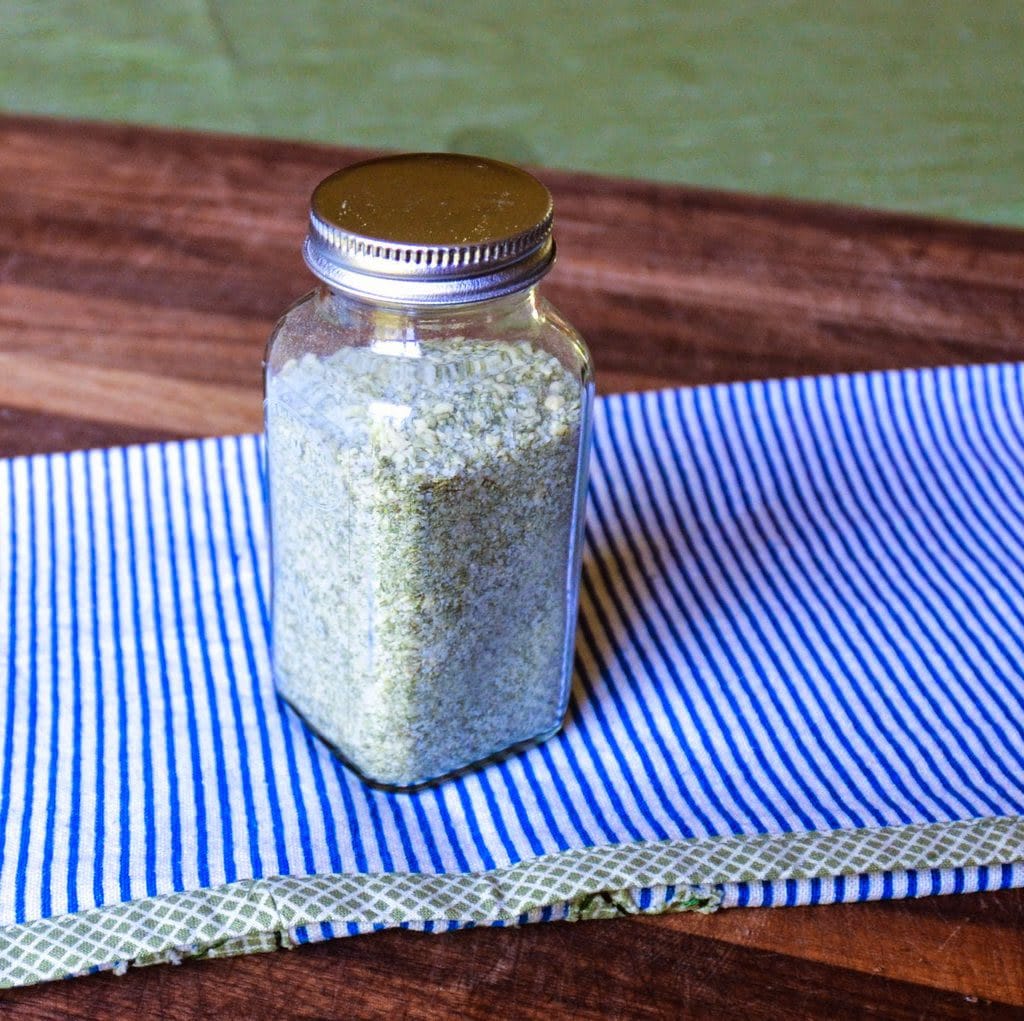
7. Put your herb salt into a glass jar with a tightly-fitted lid. Store in a dark, dry place with your spices and dried herbs to preserve its flavor.
I will use my herb saltblend to flavor a pork loin, baked chicken or even a beef roast. It would also taste great when sprinkled on roasted vegetables or put into soups, don’t you think?
As you can imagine there are a number of different types of herb salts that you can make. Here are a few different combinations that you might want to try:
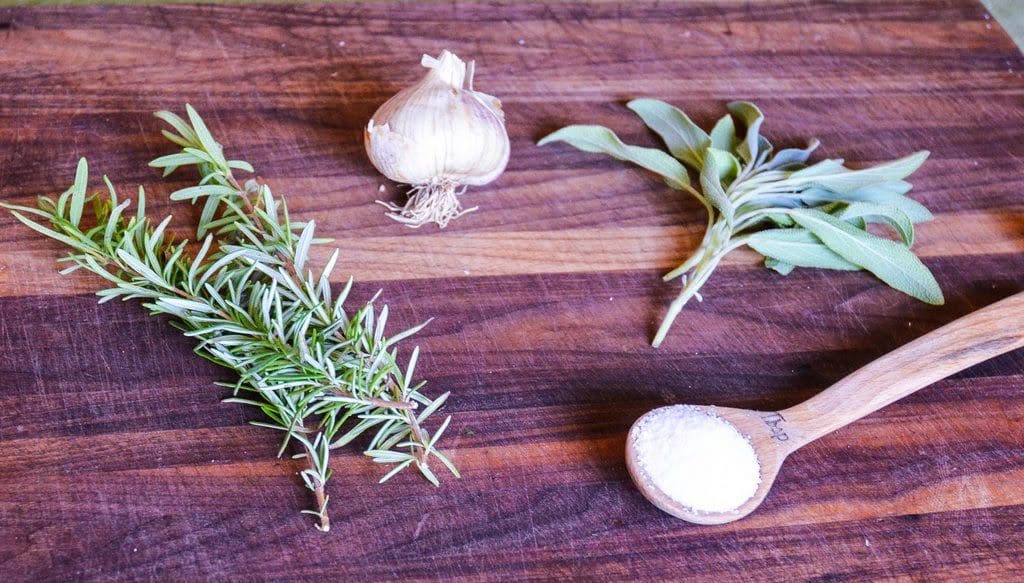
Photo: Rosemary Sage Garlic Salt
All of these herb salt blends can be made following the same steps as I have done for my herb salt blend – except where noted.
Rosemary Lemon Pepper Salt – 1/3 cup rosemary leaves, 2 tablespoons lemon zest, 1 teaspoon freshly ground black pepper and 1/2 cup kosher salt.
*(Increase cooking time to 1 hour)
Rosemary Sage and Garlic Salt – 1/2 cup of rosemary leaves, 1/2 cup sage, 5 peeled garlic cloves and 1/4 cup kosher salt.
Sage Thyme and Garlic Salt – 1/2 cup sage, 1/2 cup thyme, 5 peeled garlic cloves and 1/4 cup kosher salt.
If your garden is filled with herbs, this is a creative way to use them in the kitchen or give them as gifts. Even if you don’t have a garden filled with herbs, you can find fresh herbs at your local grocery store or farmers market.
So, how about you? What would herb(s) would your ideal herb salt contain?


